Spanish Colonial Revival architecture represents one of America's most enduring and romantically appealing architectural movements, emerging in the early 20th century as a nostalgic celebration of the nation's Spanish colonial heritage. This captivating style draws inspiration from the rich architectural traditions of Spain, Mexico, and the early American Southwest, creating buildings that seamlessly blend historical authenticity with modern functionality. Characterized by distinctive white stucco walls, red clay tile roofs, graceful arches, and intimate courtyards, Spanish Colonial Revival architecture gained national prominence after the 1915 Panama-California Exposition in San Diego. The movement flourished between 1915 and 1931, particularly in warm climate regions like California, Florida, and Texas, where the style's emphasis on outdoor living and natural cooling proved ideally suited to local conditions. Today, this architectural legacy continues to influence contemporary design, demonstrating how traditional forms can adapt to modern living while preserving their essential cultural character and timeless appeal.
1. Panama-California Exposition Origins
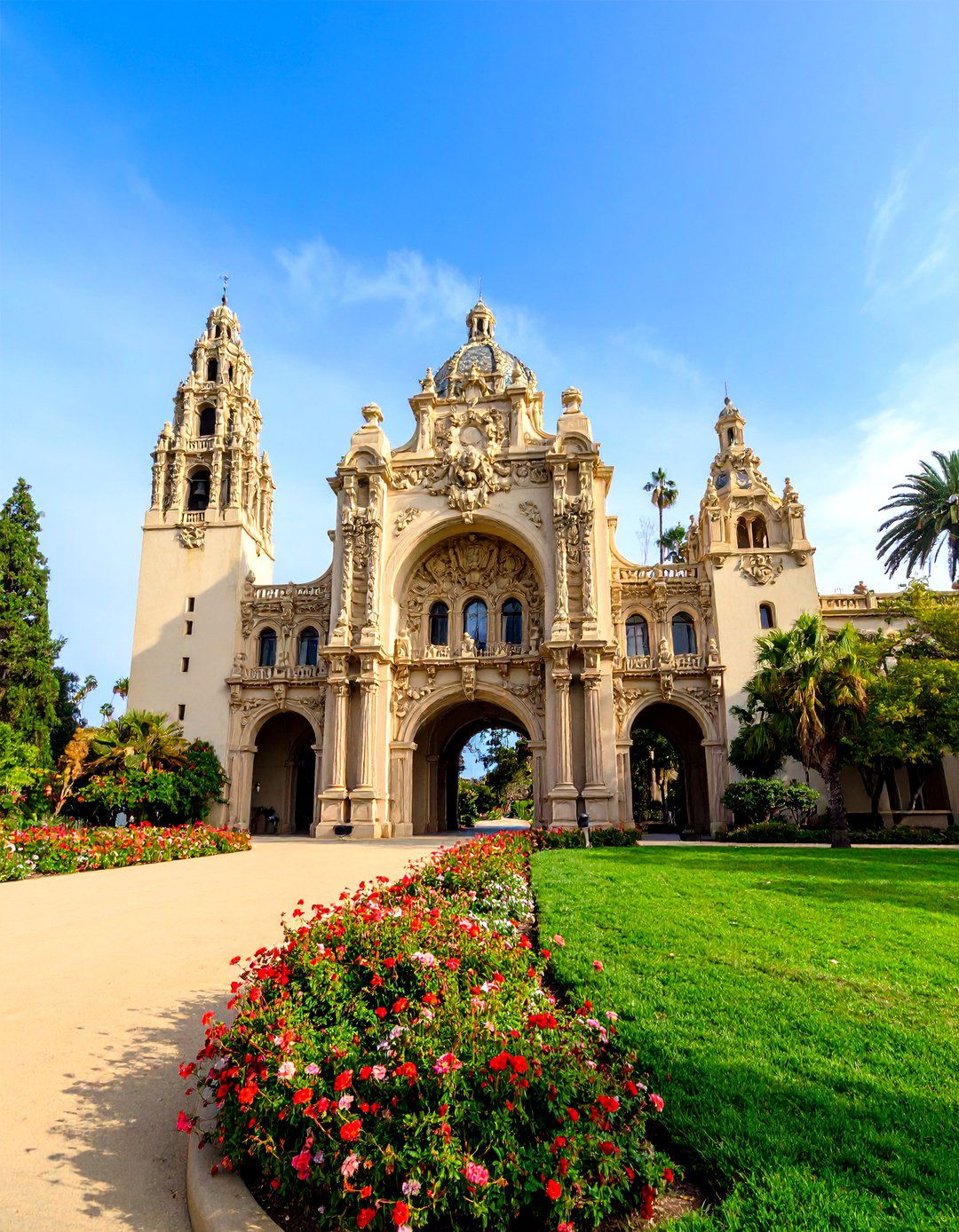
The 1915 Panama-California Exposition in San Diego marked the pivotal moment when Spanish Colonial Revival architecture captured America's imagination. Architects Bertram Goodhue and Carleton Winslow Sr. deliberately chose Spanish-inspired designs over traditional European Beaux-Arts styles, creating a radical departure from previous expositions. The stunning California Quadrangle became the movement's crown jewel, featuring elaborate Churrigueresque ornamentation and romantic interpretations of colonial Spanish structures. This exposition introduced millions of visitors to the possibilities of Spanish-inspired design, sparking a nationwide fascination with the style. The success of these buildings proved that American architecture could draw inspiration from sources beyond European traditions, establishing Spanish Colonial Revival as a legitimate and desirable architectural movement that would dominate warm-climate regions for decades.
2. Stucco Wall Construction
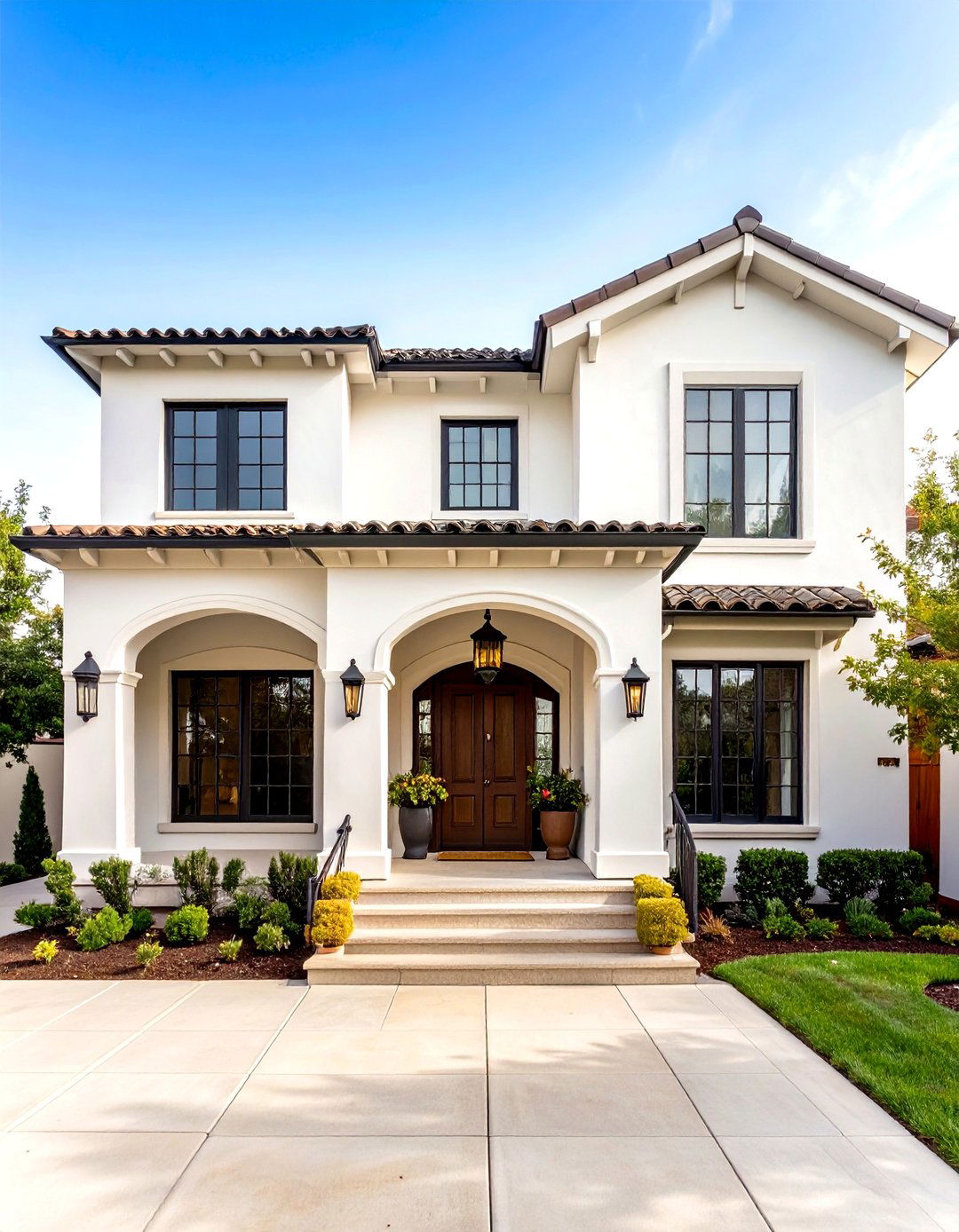
Have you ever wondered why Spanish Colonial Revival homes feel so cool and inviting? The answer lies in their distinctive stucco exterior walls, which serve both aesthetic and practical purposes. Smooth, hand-troweled stucco applied over adobe brick, concrete block, or wood frame construction creates the style's signature look while providing excellent insulation against heat. These thick walls, typically painted in warm whites or light earth tones, reflect sunlight and maintain comfortable interior temperatures even during scorching summer days. The slightly irregular texture of hand-applied stucco gives buildings an aged, Old World appearance that connects them to centuries-old Spanish architectural traditions. Modern applications often substitute synthetic stucco systems for traditional lime-based mixtures, but the visual effect remains unchanged, creating buildings that appear to have emerged naturally from Mediterranean landscapes.
3. Red Clay Tile Roofing
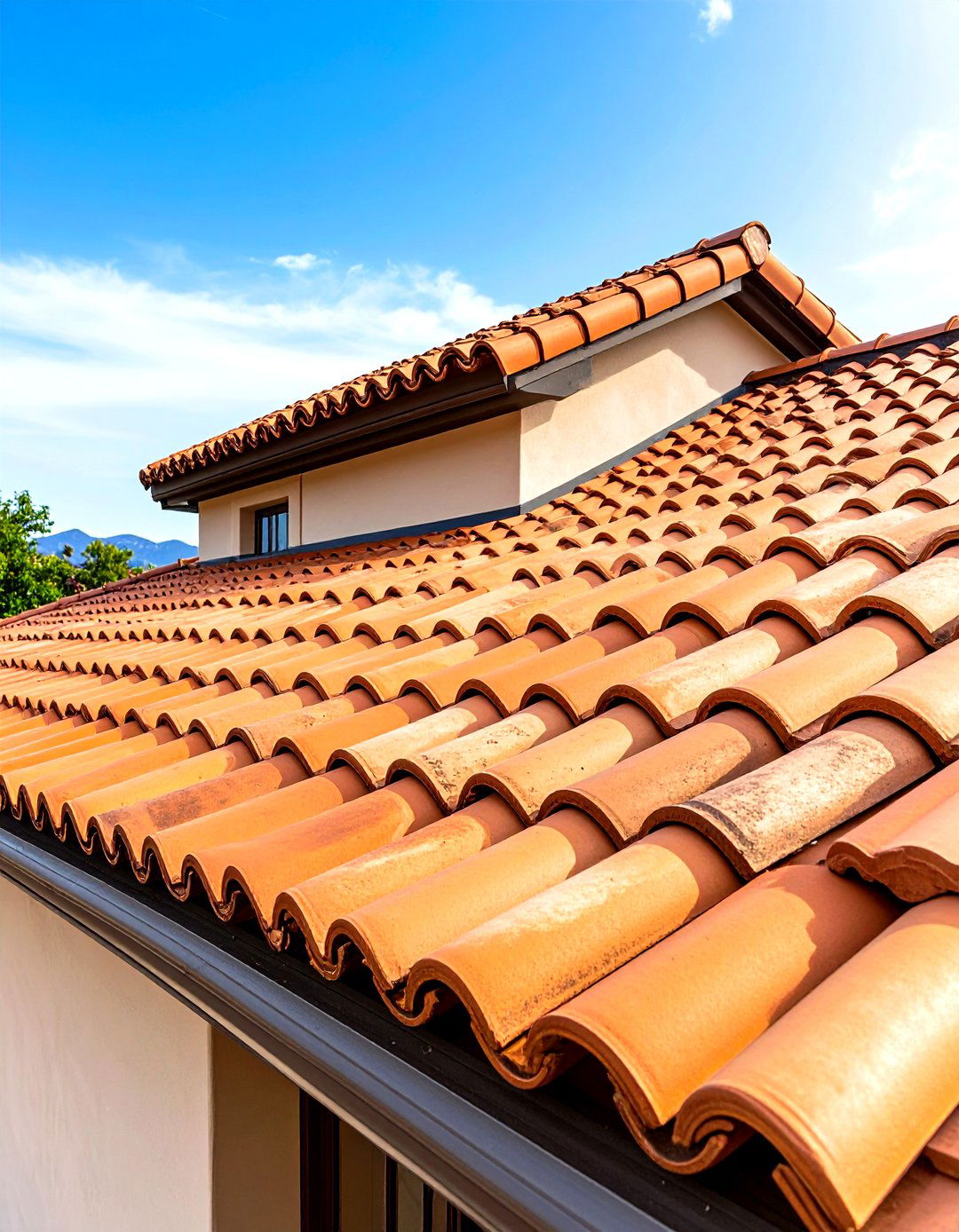
The iconic red clay tile roof stands as perhaps the most recognizable feature of Spanish Colonial Revival architecture, instantly evoking images of Mediterranean villages and Spanish missions. These curved barrel tiles, traditionally made from local clay and fired to achieve their characteristic terracotta color, provide both beauty and functionality. Low-pitched roofs with minimal or no eave overhang create clean, geometric silhouettes that emphasize the building's horizontal lines. The tiles' overlapping installation method ensures excellent water shedding while allowing air circulation beneath, helping to keep structures cool. Regional variations include S-shaped mission tiles and flat interlocking styles, each contributing to the roof's distinctive texture and shadow patterns. Modern versions may use concrete or composite materials that mimic traditional clay, but the visual impact remains unmistakable, instantly identifying buildings with Spanish heritage and creating timeless architectural statements.
4. Arched Openings Design
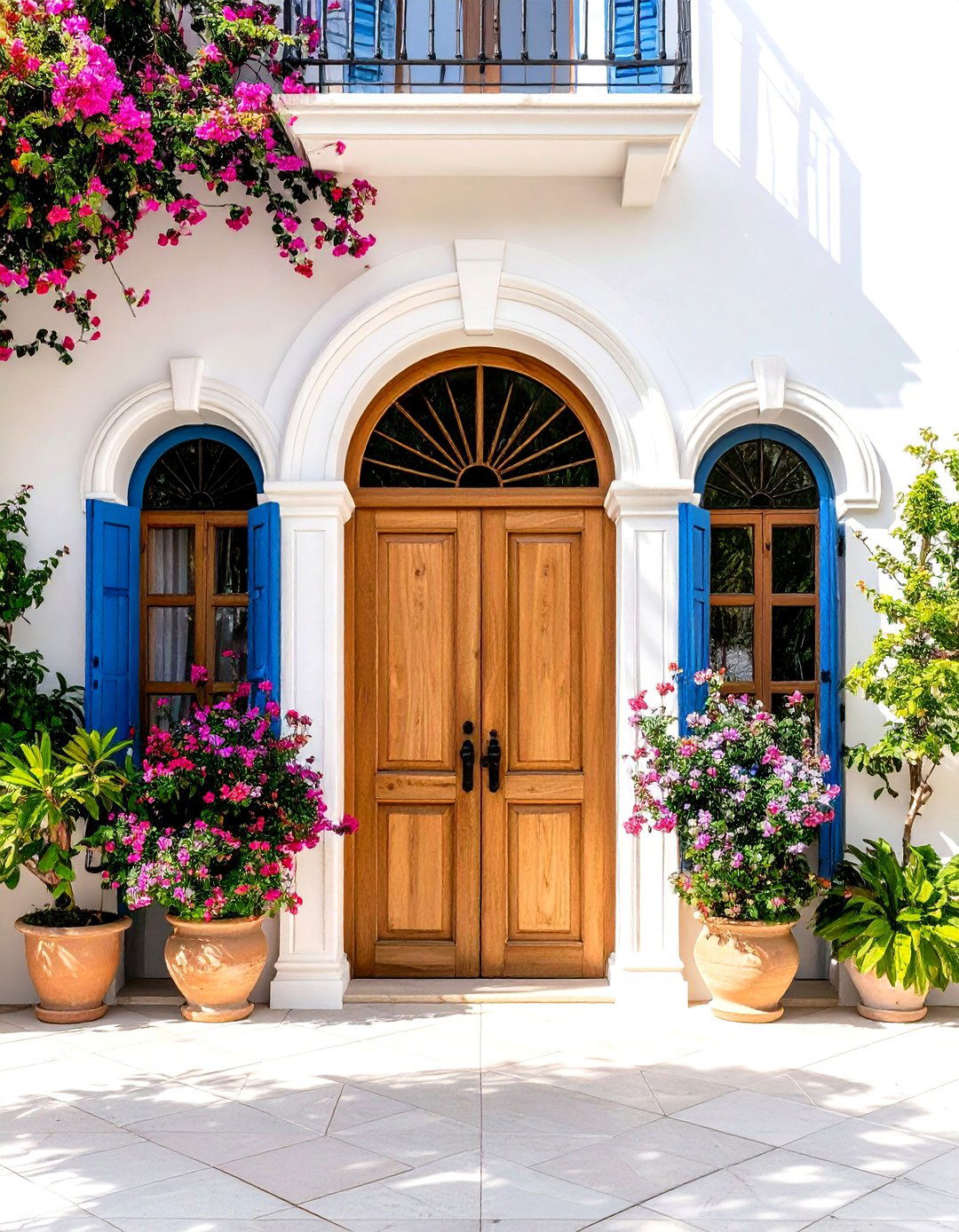
Graceful arches form the architectural poetry of Spanish Colonial Revival design, creating fluid transitions between spaces while echoing centuries of Moorish and Spanish influence. These soft, round-topped openings appear in doorways, windows, loggias, and interior passages, establishing the style's romantic and welcoming character. Why do these curves feel so naturally appealing? Their organic forms contrast beautifully with the angular geometry of walls and rooflines, creating visual interest and architectural hierarchy. Semi-circular and segmented arches often frame main entrances, while smaller arched windows maintain proportional harmony throughout the facade. Interior archways define living spaces without the harsh separation of conventional doorways, supporting the Spanish emphasis on flowing, interconnected rooms. Whether supporting structural loads or serving purely decorative purposes, these arched elements infuse buildings with the timeless elegance that makes Spanish Colonial Revival architecture so enduringly popular.
5. Courtyard Integration Planning
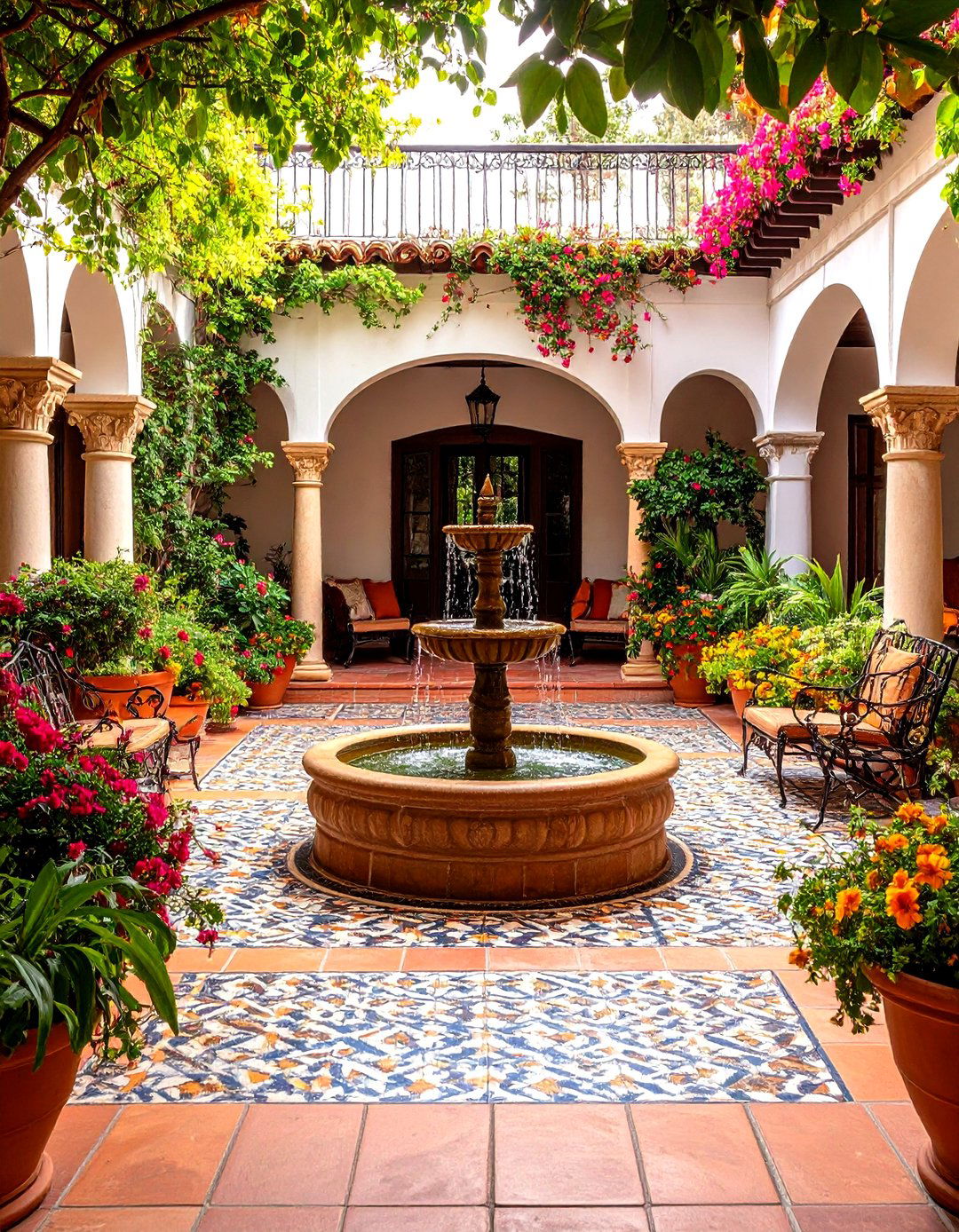
Central courtyards represent the heart of Spanish Colonial Revival architecture, creating private outdoor sanctuaries that embody the style's indoor-outdoor living philosophy. These enclosed or semi-enclosed spaces, often featuring fountains, lush plantings, and decorative paving, provide cool retreats from hot climates while maintaining family privacy. L-shaped or U-shaped building configurations naturally create courtyard spaces, while rectangular plans may incorporate interior courtyards accessed through French doors or arched openings. Traditional Spanish haciendas inspired these layouts, where family life centered around protected outdoor areas rather than public streets. Modern interpretations adapt courtyard concepts to contemporary lot sizes and privacy requirements, sometimes creating suggestion of courtyards through strategic landscaping and architectural elements. These spaces serve multiple functions: outdoor dining areas, children's play zones, meditation gardens, and entertainment venues that extend living space beyond interior walls.
6. Exposed Beam Details
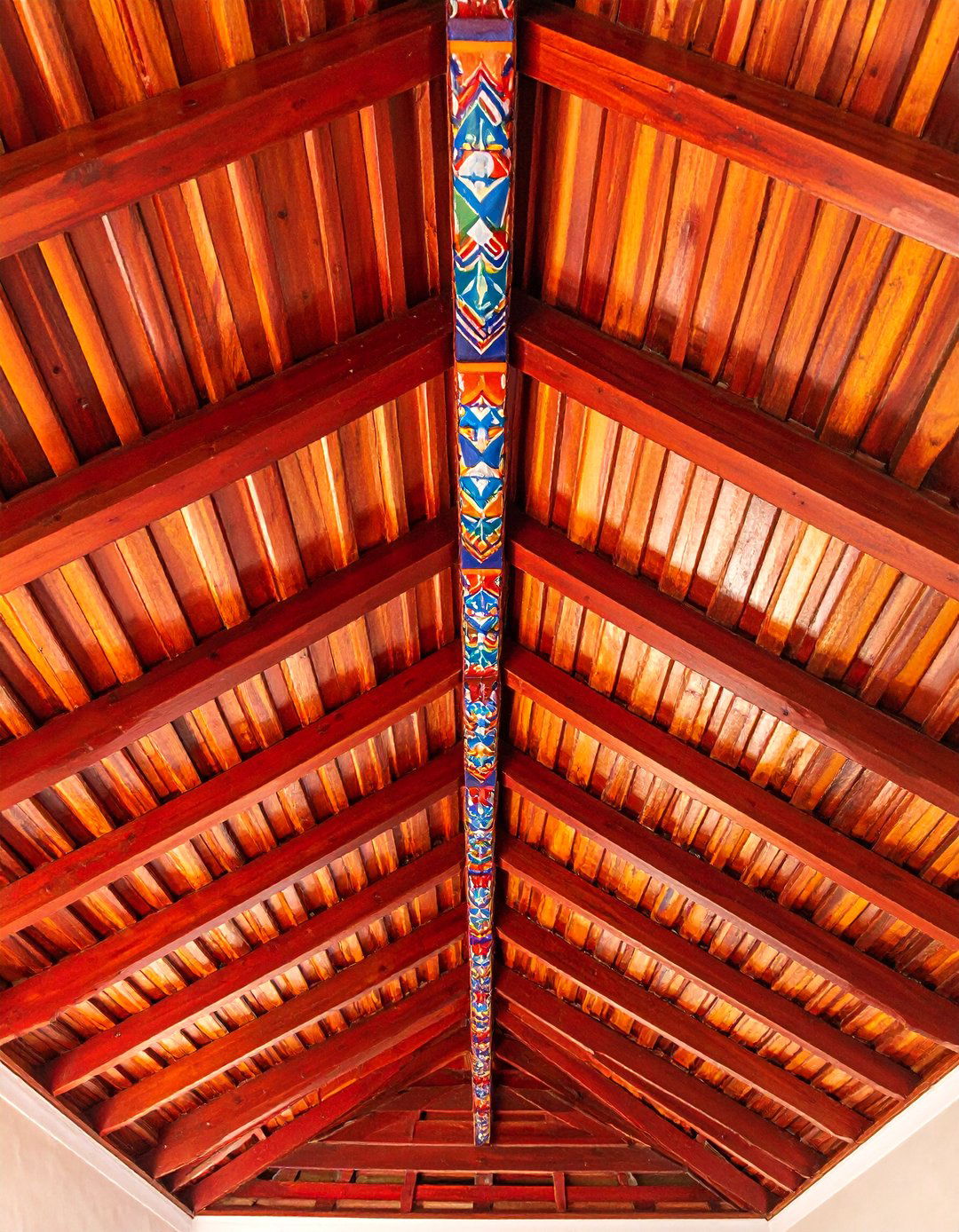
Exposed wooden ceiling beams, called vigas in traditional Spanish construction, add warmth and rustic charm to Spanish Colonial Revival interiors while serving important structural and aesthetic functions. These heavy timber elements, often left in natural finishes or stained dark brown, originally supported clay tile roofs and upper floors in adobe construction. How do these beams transform a room's character? Their horizontal lines draw the eye upward, creating visual interest on otherwise plain ceiling surfaces while adding textural contrast to smooth stucco walls. Authentic installations feature hand-hewn beams with irregular surfaces and natural imperfections, though modern interpretations may use machined lumber or even decorative faux beams. Strategic placement can define seating areas, frame fireplaces, or emphasize architectural features. Whether structural or purely decorative, exposed beams connect interiors to the style's agricultural and craftsmanship heritage, creating cozy, sophisticated spaces.
7. Wrought Iron Craftsmanship
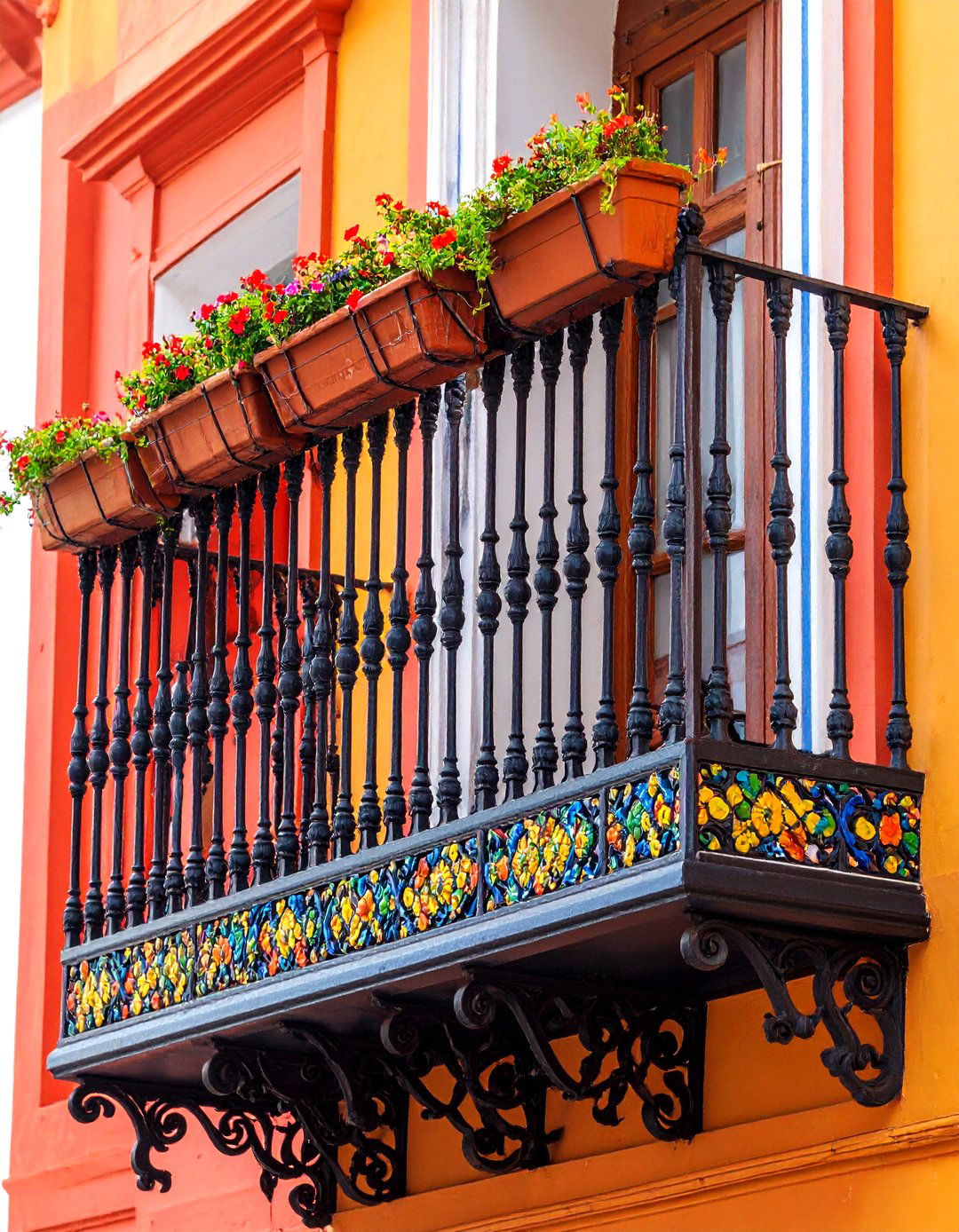
Intricate wrought iron details provide Spanish Colonial Revival architecture with its most distinctive ornamental elements, reflecting centuries of Moorish metalworking traditions. These handcrafted elements appear in window grilles, balcony railings, gate hardware, light fixtures, and decorative screens, adding security, beauty, and cultural authenticity. Traditional blacksmithing techniques create scrollwork, geometric patterns, and stylized botanical motifs that cast dramatic shadows while filtering light and air. What makes wrought iron so perfectly suited to this architectural style? Its dark color contrasts beautifully with white stucco walls, while its organic curves complement the style's arched openings and flowing forms. Modern fabrication methods allow for more precise and affordable reproduction of traditional patterns, though hand-forged elements remain the gold standard for authentic projects. Strategic placement of wrought iron accents can transform simple buildings into architecturally rich compositions that celebrate Spanish heritage and craftsmanship traditions.
8. Decorative Tile Applications
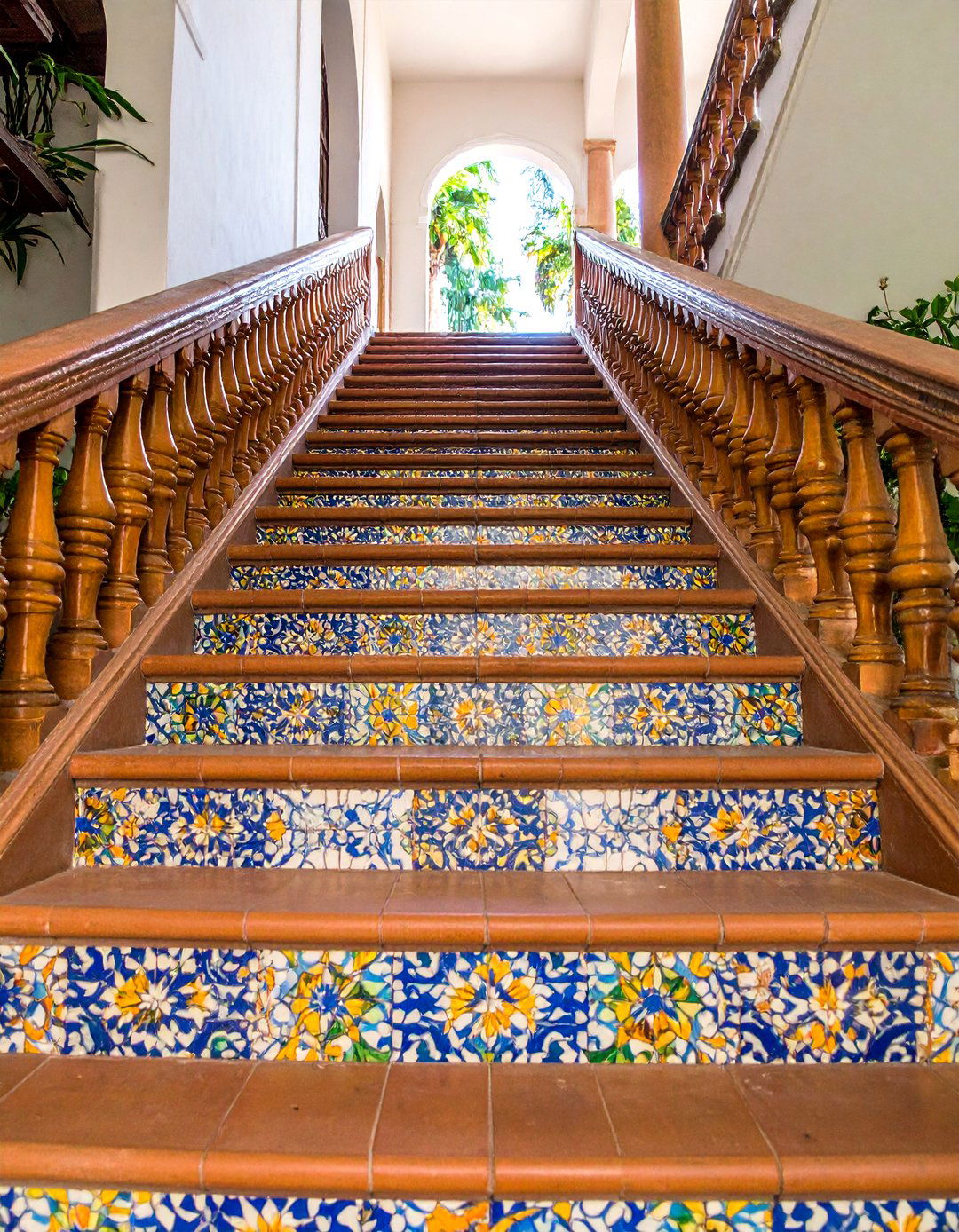
Colorful ceramic tiles bring vibrant personality to Spanish Colonial Revival architecture, celebrating the rich tradition of Iberian and Moorish decorative arts. These glazed elements appear on stair risers, fountain surfaces, kitchen backsplashes, and accent walls, creating focal points that inject color and pattern into otherwise neutral schemes. Hand-painted Talavera tiles from Mexico, geometric Moorish patterns, and reproduction Spanish ceramics offer authentic options for contemporary projects. Do these tiles serve purposes beyond decoration? Their glazed surfaces resist moisture and staining, making them practical choices for kitchens, bathrooms, and outdoor applications. Installation techniques range from subtle accent borders to bold geometric murals that cover entire walls. Modern interpretations may substitute machine-made tiles for hand-painted originals, but the visual impact remains powerful. Careful selection and placement of decorative tiles can transform ordinary spaces into exotic, sophisticated environments that transport occupants to Mediterranean settings.
9. Indoor-Outdoor Living Spaces
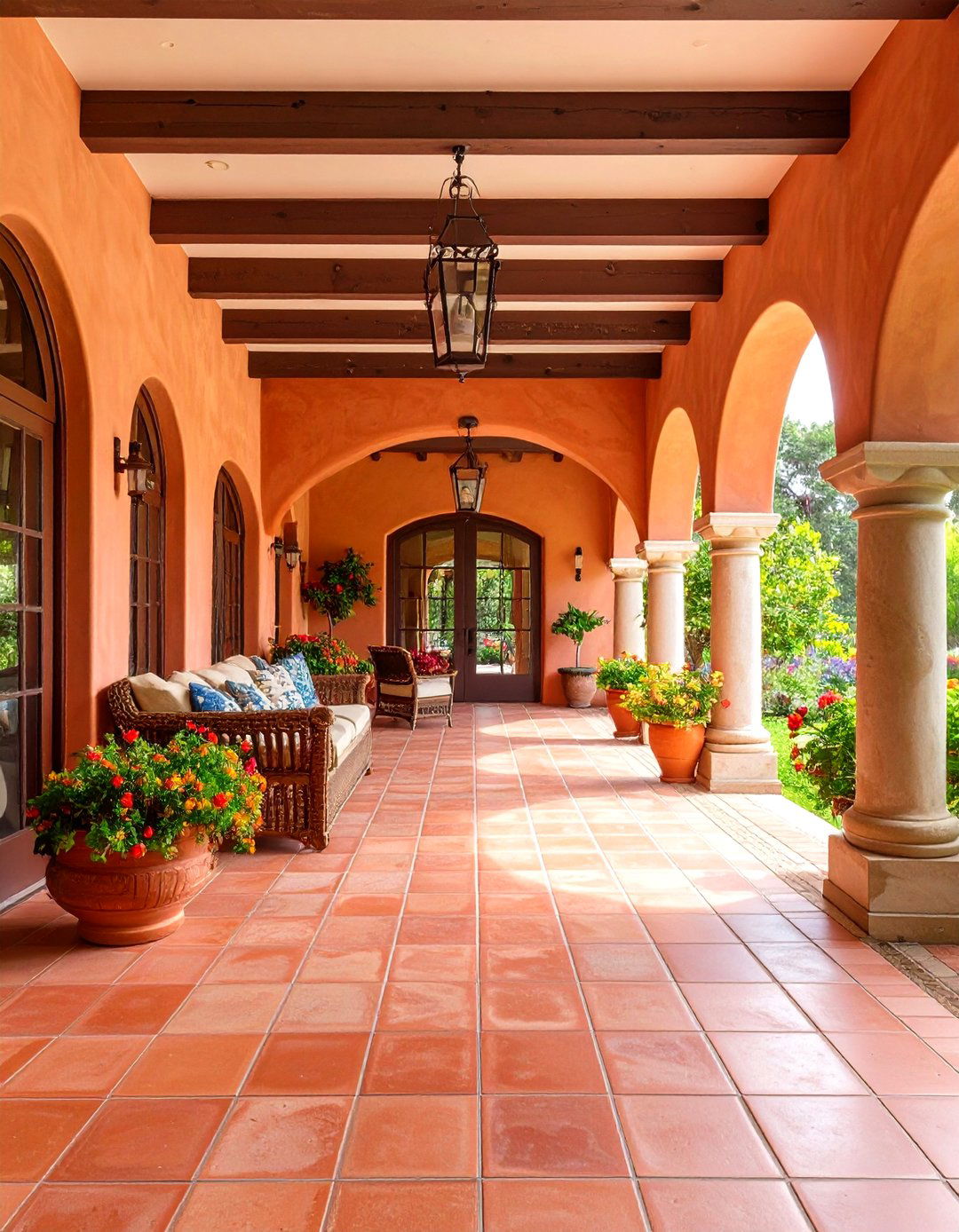
Spanish Colonial Revival architecture pioneered the seamless integration of indoor and outdoor living spaces that defines modern California lifestyle. Covered loggias, arcaded walkways, and shaded terraces extend interior rooms into garden settings, creating flexible spaces that adapt to climate and social needs. French doors, floor-to-ceiling windows, and retractable walls eliminate barriers between inside and outside, allowing natural ventilation and visual connections to landscape. Why does this indoor-outdoor concept feel so naturally appealing? It responds to human desires for fresh air, natural light, and connection to nature while providing shelter and comfort. Covered outdoor rooms feature the same ceiling treatments, flooring materials, and furniture arrangements as interior spaces, creating unified design schemes. Modern interpretations incorporate contemporary technologies like retractable screens, outdoor kitchens, and weather-resistant electronics to enhance outdoor comfort and functionality while maintaining the style's essential character.
10. Mission Revival Connections
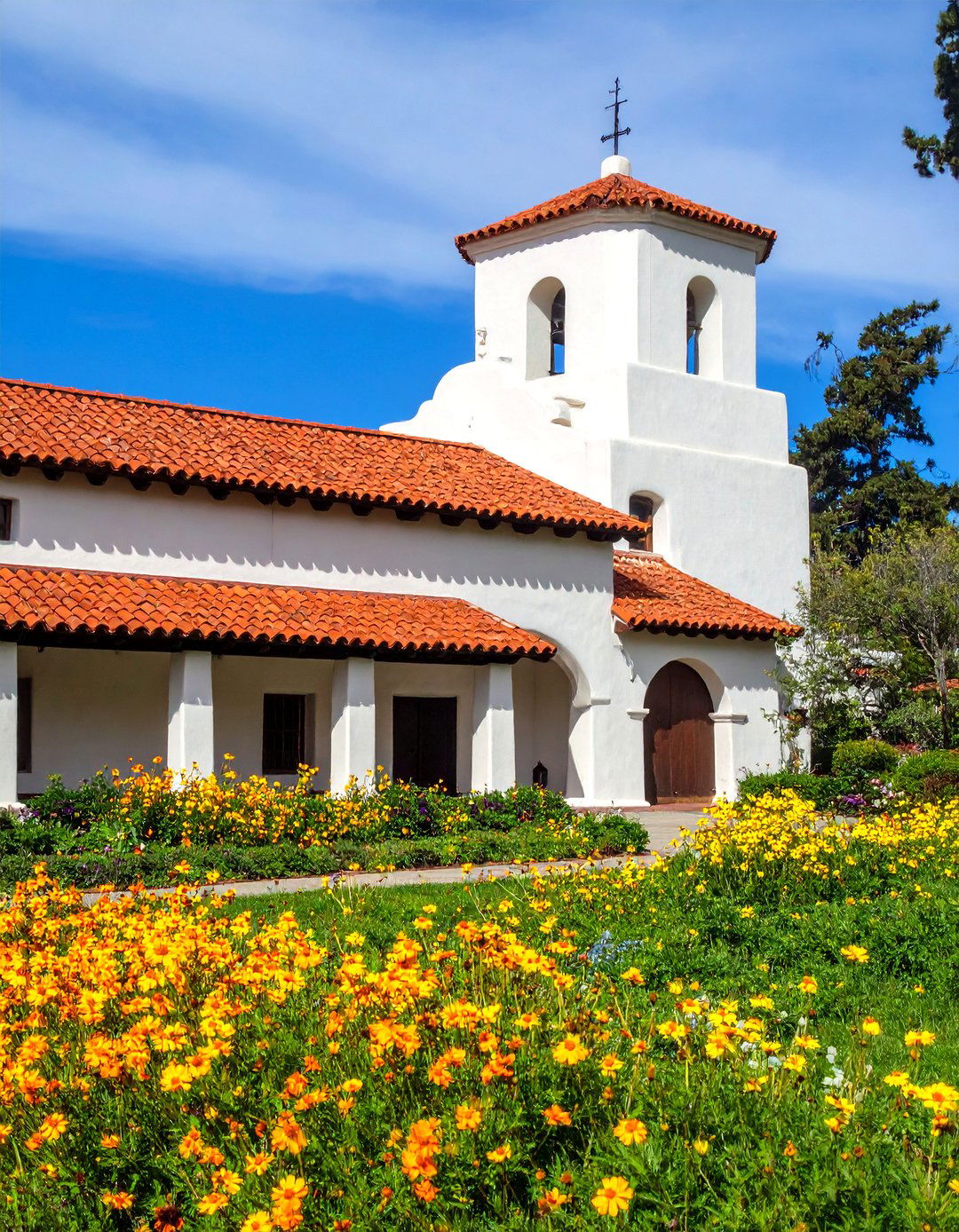
Mission Revival architecture provided the foundation upon which Spanish Colonial Revival would build its more elaborate and romantic interpretations. Early California missions, with their simple stucco walls, red tile roofs, and distinctive curved parapets, offered readily recognizable Spanish colonial elements that architects could adapt for contemporary buildings. How did this ecclesiastical architecture translate to residential design? Mission Revival emphasized clean lines, minimal ornamentation, and practical functionality that suited early 20th-century building budgets and construction methods. Spanish Colonial Revival expanded this vocabulary, adding ornate details from Spanish Baroque, Churrigueresque, and Moorish traditions to create richer, more varied compositions. The mission bell tower became a popular decorative element, while mission-style arched arcades provided practical covered walkways. Both styles shared emphasis on courtyards, outdoor living, and climate-responsive design, establishing Spanish colonial architecture as distinctly American while honoring historical precedents.
11. Mediterranean Revival Blending
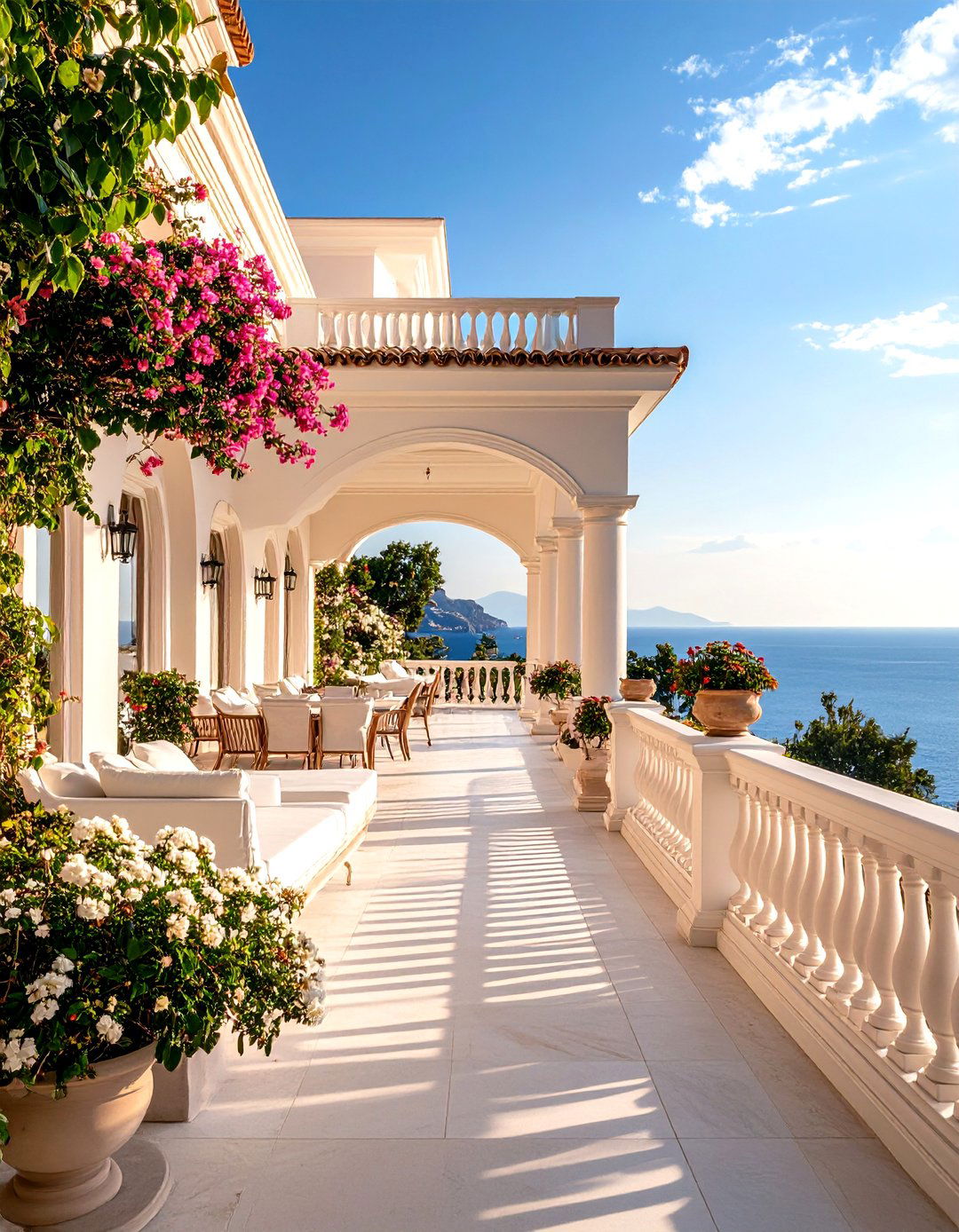
Mediterranean Revival architecture developed alongside Spanish Colonial Revival, sharing many elements while drawing additional inspiration from Italian and French coastal traditions. Both styles emphasized stucco walls, tile roofs, and arched openings, but Mediterranean Revival often incorporated more elaborate classical details like columns, balustrades, and formal gardens. What distinguishes these closely related styles? Spanish Colonial Revival tends toward asymmetrical compositions and rustic materials, while Mediterranean Revival often features more symmetrical facades and refined details. Many buildings successfully combine elements from both traditions, creating eclectic compositions that celebrate the broader Mediterranean architectural heritage. Italian loggia designs, French wrought iron work, and Spanish ceramic tiles might appear in single projects, unified by consistent color palettes and material choices. This stylistic flexibility allowed architects to create unique buildings that responded to specific site conditions, client preferences, and regional building traditions while maintaining overall Mediterranean character.
12. Monterey Style Variations
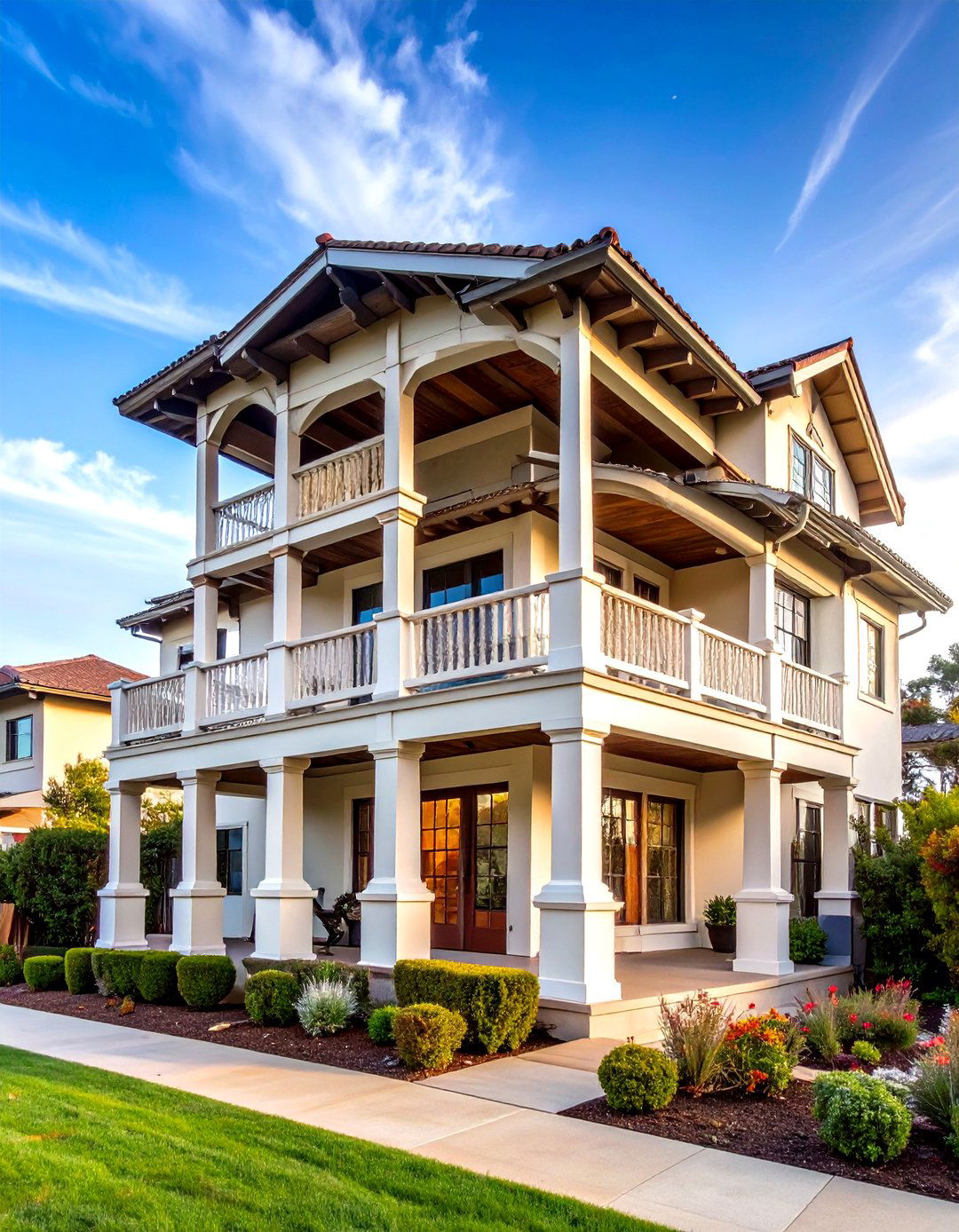
The distinctive Monterey style represents a unique fusion of Spanish Colonial and New England Colonial traditions, creating one of California's few indigenous architectural styles. Characterized by two-story structures with prominent second-floor balconies or wrap-around porches, Monterey buildings reflect the cultural mixing that occurred when Anglo settlers arrived in Mexican California. Why does this hybrid style feel so distinctively Californian? It responds to local climate needs while accommodating both Spanish and American lifestyle preferences. The covered balcony provides outdoor living space and weather protection while creating architectural interest and regional identity. Traditional examples feature adobe walls, hip roofs, and simple wooden details, though revival versions often substitute wood frame construction and more elaborate ornamentation. Modern Monterey Revival buildings may incorporate contemporary elements like larger windows and updated mechanical systems while maintaining the style's essential character through proportions, materials, and the signature balcony feature that defines this uniquely American architectural expression.
13. California Regional Development
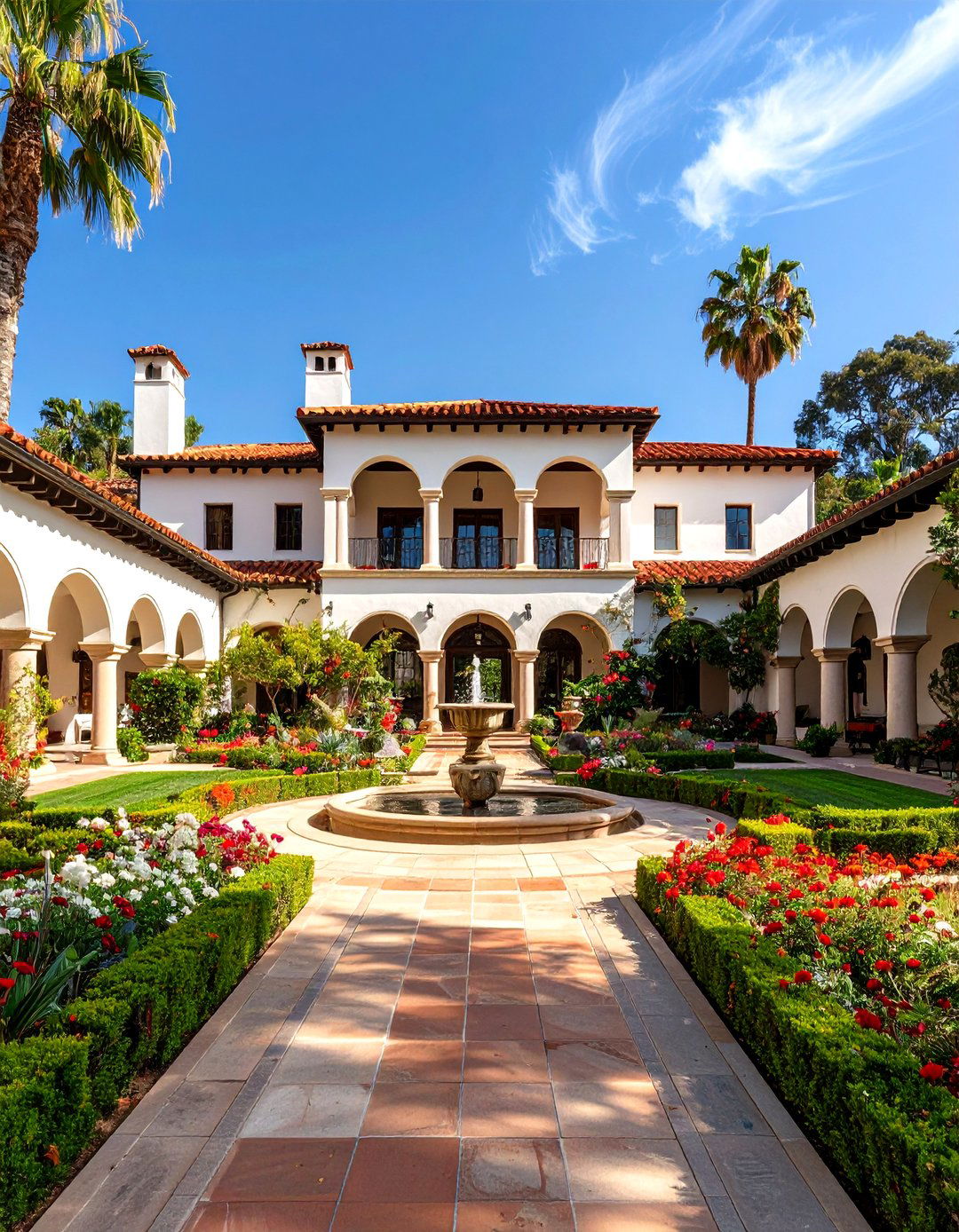
California served as the primary laboratory for Spanish Colonial Revival development, where the style achieved its most authentic and varied expressions. From Santa Barbara's unified post-earthquake reconstruction to Hollywood's glamorous estates, California architects explored every possibility within the Spanish colonial vocabulary. What made California so receptive to this architectural movement? The state's Spanish heritage, Mediterranean climate, and rapidly growing population created perfect conditions for architectural experimentation and innovation. Notable architects like George Washington Smith, Wallace Neff, and Julia Morgan developed distinctive regional approaches, from Santa Barbara's refined interpretations to Los Angeles's more theatrical expressions. The style adapted to various building types, from modest bungalows to grand estates, commercial buildings to apartment complexes. California's Spanish Colonial Revival buildings established design standards that influenced development throughout the Southwest and beyond, creating an architectural legacy that continues to shape the state's identity and building practices.
14. Florida Interpretations
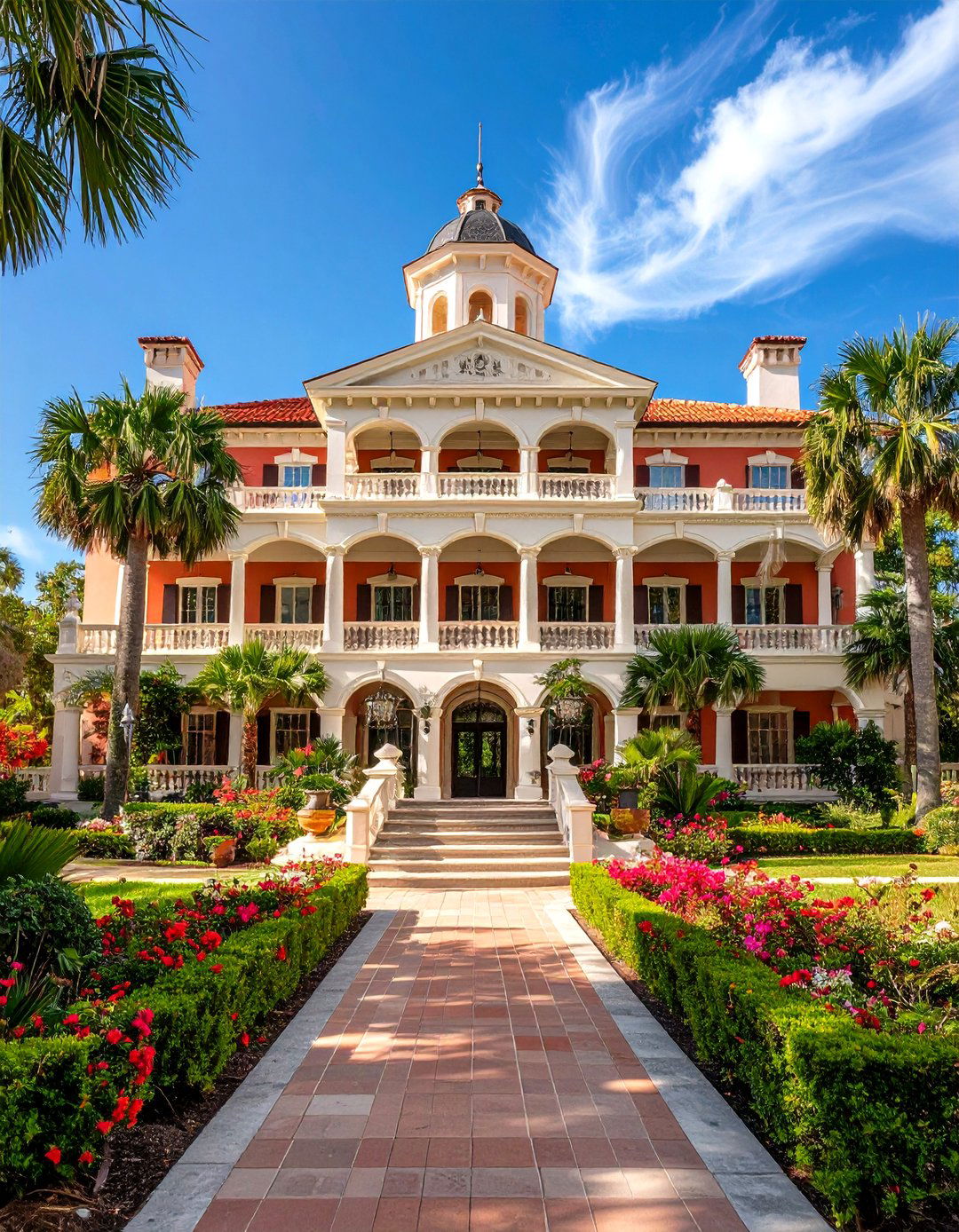
Florida's Spanish Colonial Revival architecture reflects the state's unique position as America's oldest Spanish settlement while serving as a winter playground for wealthy northerners. Beginning with Henry Flagler's grand hotels in St. Augustine during the 1880s, Florida's interpretation emphasized elaborate decorative details and resort-like amenities. How does Florida's version differ from western examples? The humid subtropical climate required different ventilation strategies, leading to more prominent porches, higher ceilings, and increased emphasis on cross-ventilation. Coral Gables stands as the ultimate expression of Florida Spanish Colonial Revival, with its planned community featuring unified architectural standards and elaborate Mediterranean-inspired details. The state's limestone construction materials and lush tropical landscaping created distinctive regional character that influenced building design throughout the Southeast. Modern Florida Spanish Colonial Revival continues this tradition, adapting historical elements to contemporary comfort standards while maintaining the style's essential romance and connection to the state's Spanish heritage.
15. Texas Adaptations
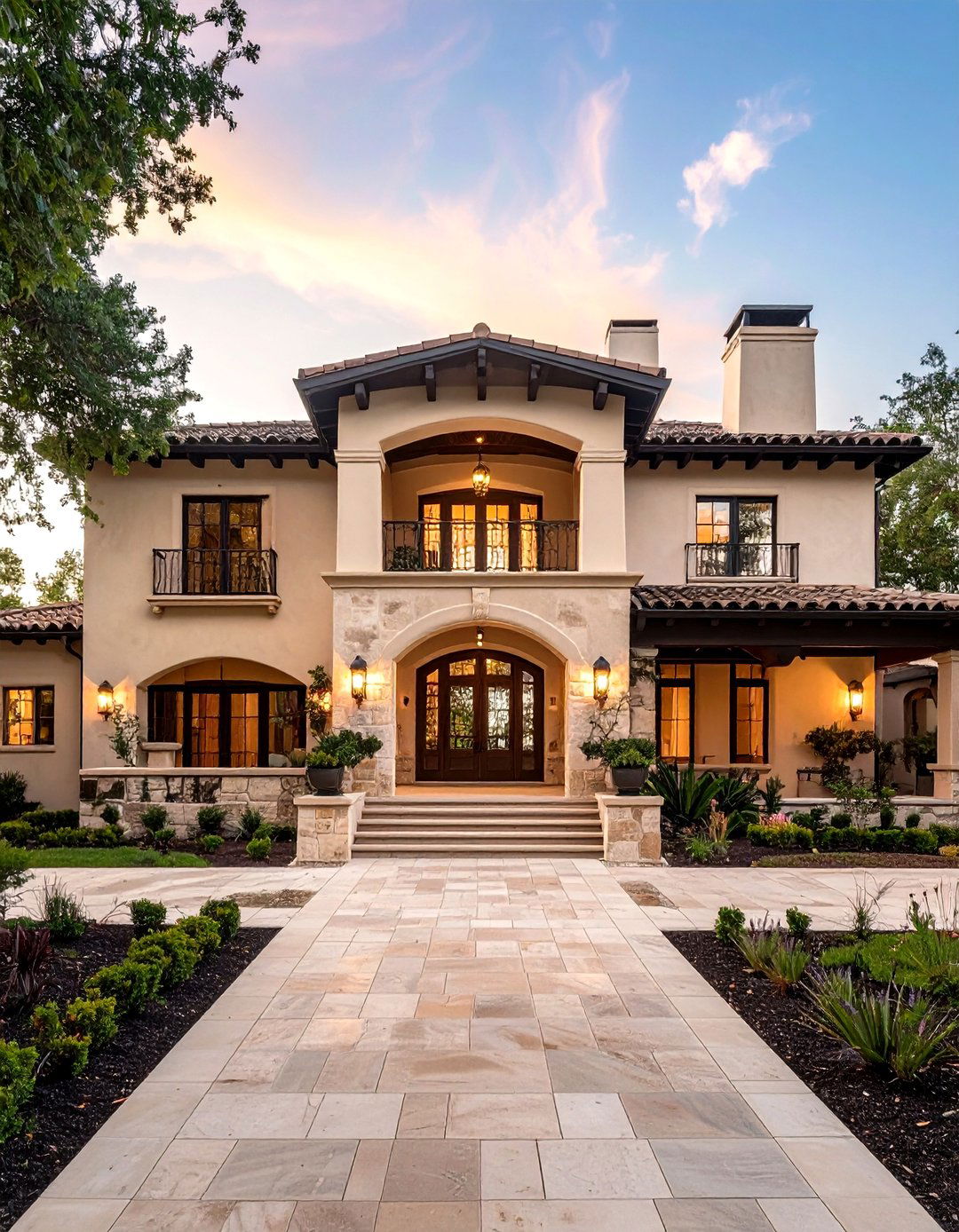
Texas Spanish Colonial Revival architecture reflects the state's unique position at the intersection of Spanish, Mexican, and Anglo-American cultures, creating distinctive regional interpretations that respond to local climate and cultural preferences. San Antonio emerged as a major center for the style, with buildings like the McNay Art Museum demonstrating sophisticated approaches to Spanish colonial design. Why does Texas Spanish Colonial Revival feel distinctly southwestern? The state's vast landscapes, extreme temperatures, and ranching heritage influenced architectural solutions that emphasized horizontal massing, deep overhangs, and fortress-like solidity. Thick stucco walls provide insulation against heat, while courtyards and arcades create cooling outdoor spaces protected from harsh sun and wind. Native limestone often replaces imported materials, while local craft traditions influence decorative details. Modern Texas interpretations maintain these practical considerations while incorporating contemporary amenities and technologies, creating buildings that honor the state's multicultural heritage while serving modern functional requirements.
16. Pueblo Revival Influences
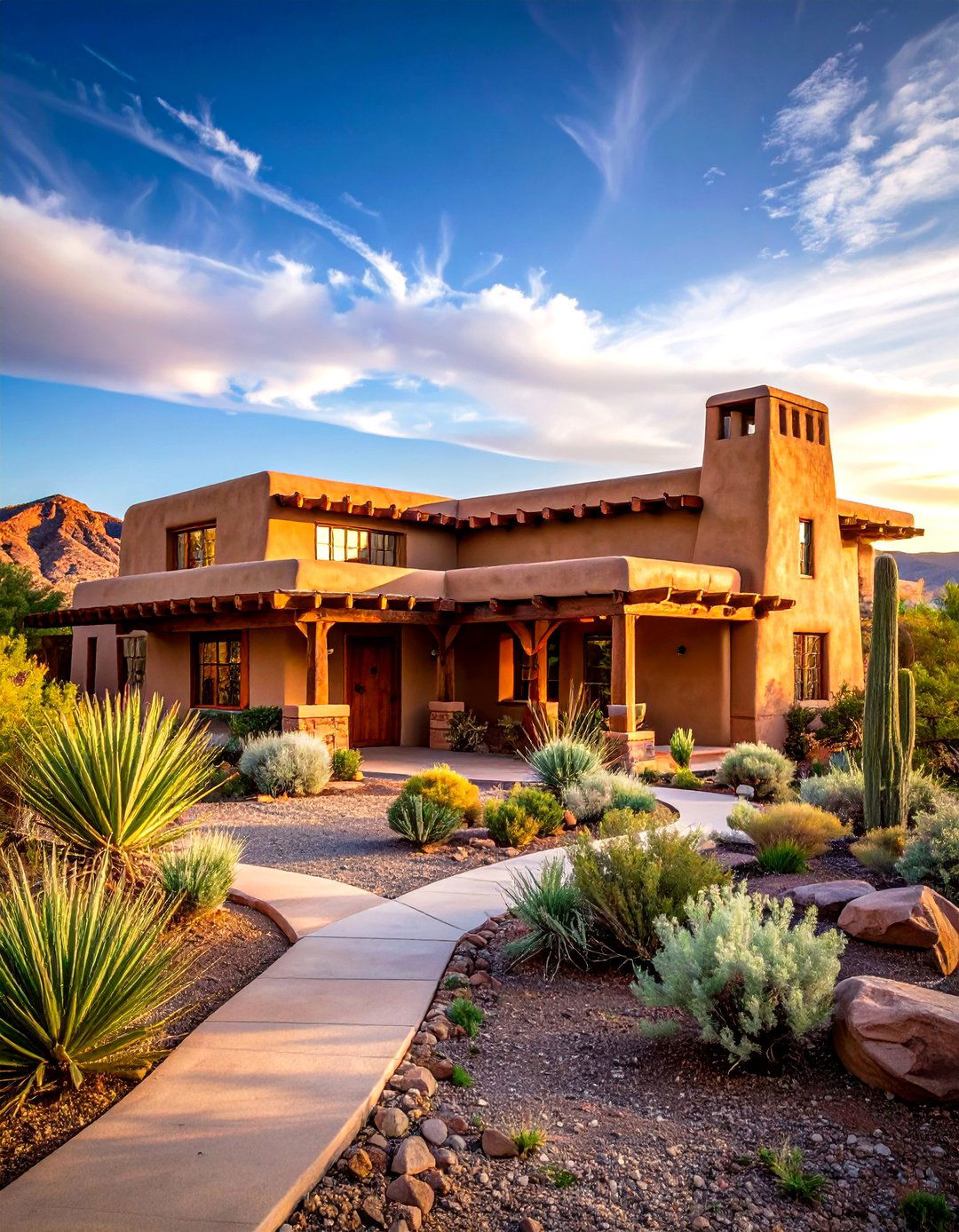
Pueblo Revival architecture contributed essential elements to the broader Spanish Colonial Revival movement, particularly in New Mexico and Arizona where Native American building traditions merged with Spanish colonial practices. Characterized by flat roofs, projecting vigas, rounded corners, and earth-tone stucco finishes, Pueblo Revival emphasized the organic, hand-built qualities of traditional adobe construction. How do these indigenous influences enrich Spanish Colonial Revival? They provide connections to pre-Columbian building traditions while offering practical solutions for desert climates and available materials. The style's emphasis on horizontal massing and integration with landscape influenced Spanish Colonial Revival architects seeking more naturalistic, site-responsive designs. Pueblo Revival elements like stepped parapets, beehive fireplaces, and latilla ceilings appeared in Spanish Colonial Revival buildings throughout the Southwest, creating hybrid designs that celebrated the region's multicultural heritage. Modern interpretations continue this synthesis, using contemporary materials and methods to achieve traditional appearances while meeting current building codes and comfort standards.
17. Churrigueresque Ornamentation
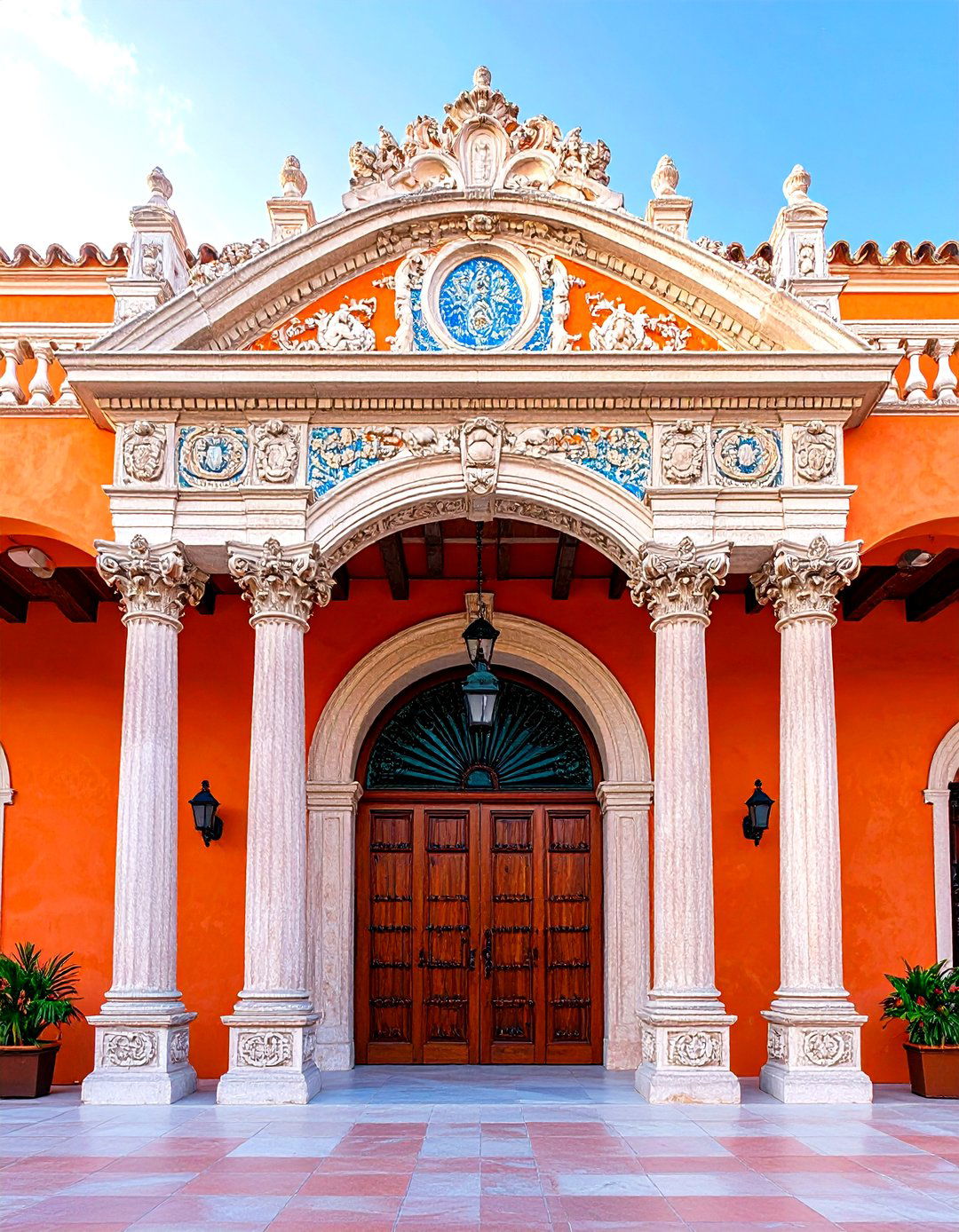
Churrigueresque decoration represents the most elaborate and theatrical aspect of Spanish Colonial Revival design, drawing inspiration from 18th-century Spanish Baroque architecture and its New World interpretations. Named after architect José Benito de Churriguera, this highly ornamental style features intricate carved stonework, elaborate entrance surrounds, and richly detailed facades that create stunning focal points on otherwise simple buildings. What makes Churrigueresque ornamentation so visually compelling? Its dense concentration of decorative elements creates dramatic contrast with plain stucco walls, while its organic, flowing forms echo natural growth patterns that feel both exotic and familiar. Traditional applications focus decoration around main entrances, where carved portal surrounds frame doorways with twisted columns, elaborate pediments, and intricate relief sculptures. Modern reproductions may use cast concrete or fiberglass to achieve similar effects at lower cost, though hand-carved stone remains the ultimate expression of this decorative tradition that transforms simple buildings into architectural masterpieces.
18. Color Palette Selection
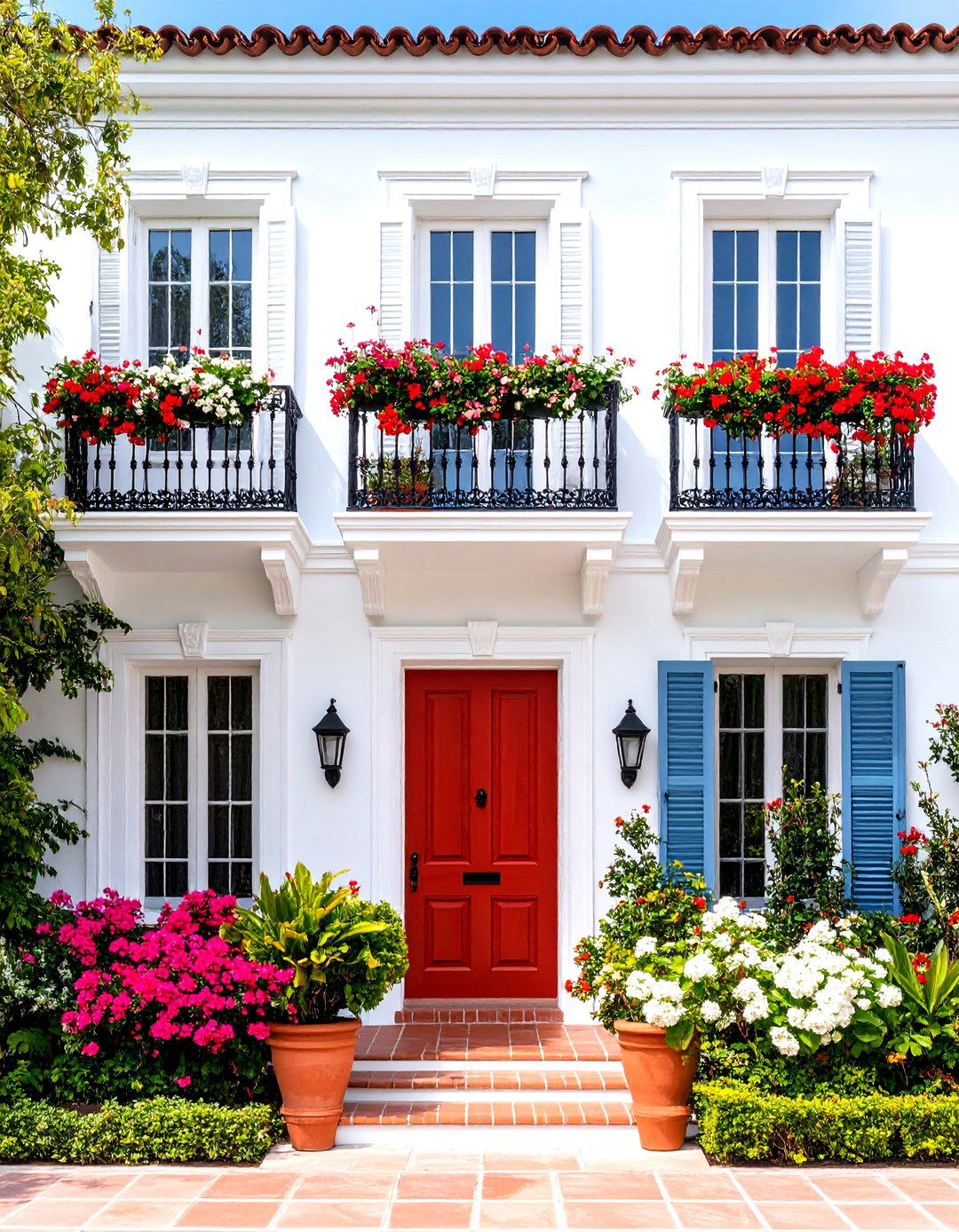
The warm, earthy color palette of Spanish Colonial Revival architecture reflects the natural pigments and materials available in Mediterranean and southwestern landscapes. Traditional schemes emphasize warm whites, cream, and light earth tones for wall surfaces, complemented by the natural red of clay tiles and the dark brown or black of wrought iron details. Why do these color combinations feel so harmonious and appealing? They echo the colors of sun-baked earth, whitewashed walls, and natural materials that create visual connections to landscape and climate. Accent colors drawn from traditional Spanish ceramics include deep blues, emerald greens, and golden yellows that appear in decorative tiles, painted woodwork, and garden elements. Interior color schemes often feature richer, more saturated versions of exterior colors, with terracotta, ochre, and deep reds creating warm, inviting atmospheres. Modern interpretations may expand this palette while maintaining its essential earth-based character, ensuring that buildings feel rooted in their natural environment.
19. Contemporary Adaptations
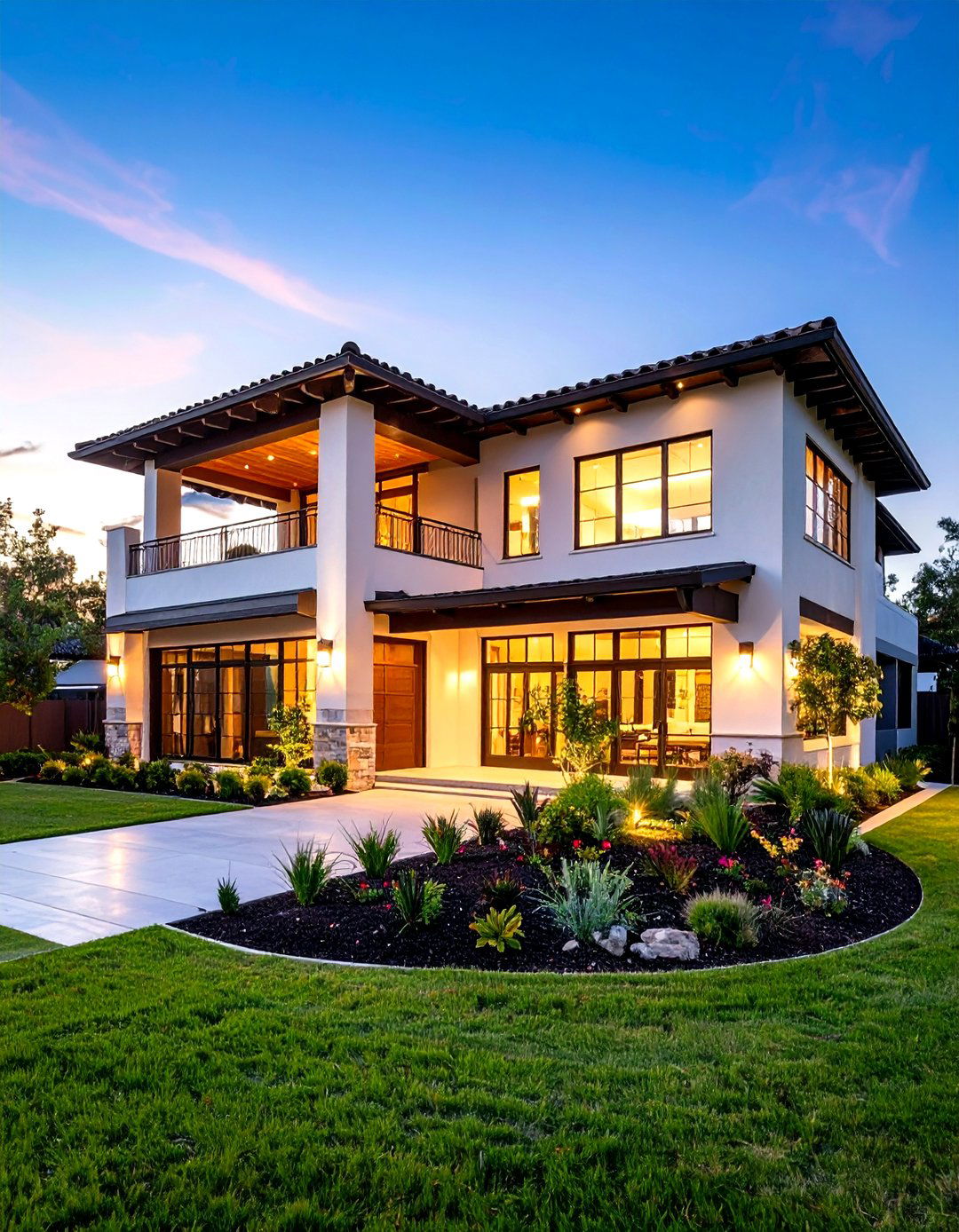
Modern Spanish Colonial Revival architecture successfully adapts historical elements to contemporary lifestyle requirements, building codes, and construction technologies while preserving the style's essential character and appeal. Contemporary interpretations often feature larger windows, open floor plans, and updated mechanical systems integrated discretely within traditional forms. How do architects balance historical authenticity with modern functionality? They focus on maintaining key visual elements like stucco walls, tile roofs, and arched openings while using contemporary materials and methods to achieve these appearances. Energy-efficient windows may fill traditional arched openings, while modern HVAC systems hide within traditional ceiling treatments. Smart home technologies integrate seamlessly with historical design elements, while contemporary kitchens and bathrooms incorporate Spanish-inspired materials and colors. Sustainable building practices complement the style's traditional climate-responsive features, creating homes that honor historical precedents while meeting 21st-century performance standards and lifestyle expectations through thoughtful adaptation and innovation.
20. Landscape Integration
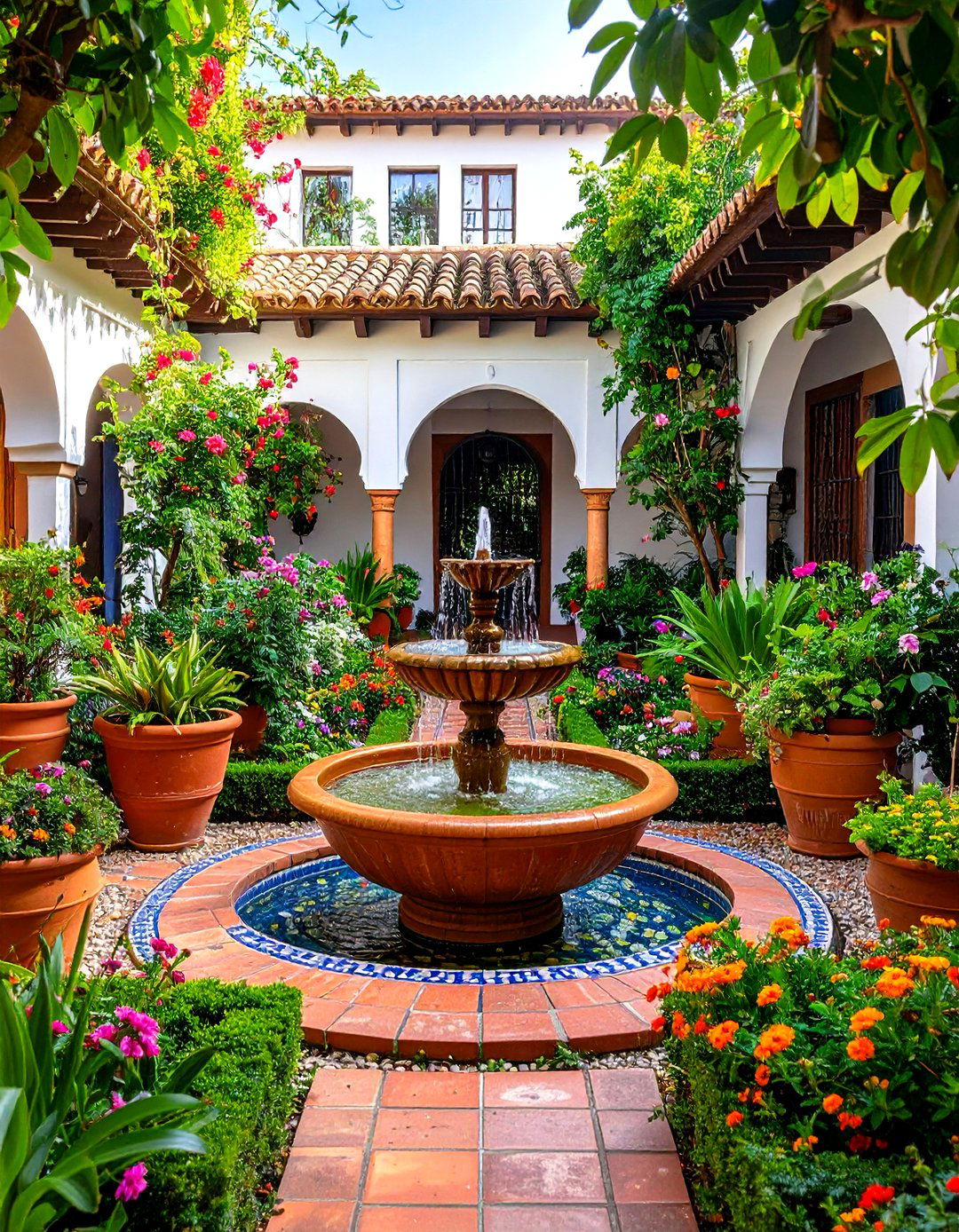
Spanish Colonial Revival landscape design emphasizes the seamless integration of architecture and garden, creating unified compositions that celebrate outdoor living and Mediterranean plant traditions. Traditional approaches feature formal courtyards with central fountains, geometric planting beds, and decorative paving that extends interior floor patterns into outdoor spaces. What makes Spanish Colonial Revival gardens so appealing and functional? They provide cooling microclimates through strategic use of shade trees, water features, and wind-channeling architectural elements while creating beautiful backdrops for outdoor activities. Plant selections typically include drought-tolerant species like citrus trees, lavender, rosemary, and bougainvillea that thrive in Mediterranean climates while providing fragrance, color, and practical benefits. Decorative elements include colorful ceramic pots, wrought iron furniture, and hand-painted tiles that echo interior design themes. Modern landscape designs maintain these principles while incorporating contemporary irrigation systems, native plant species, and sustainable maintenance practices that reduce water consumption and environmental impact.
21. Interior Design Elements
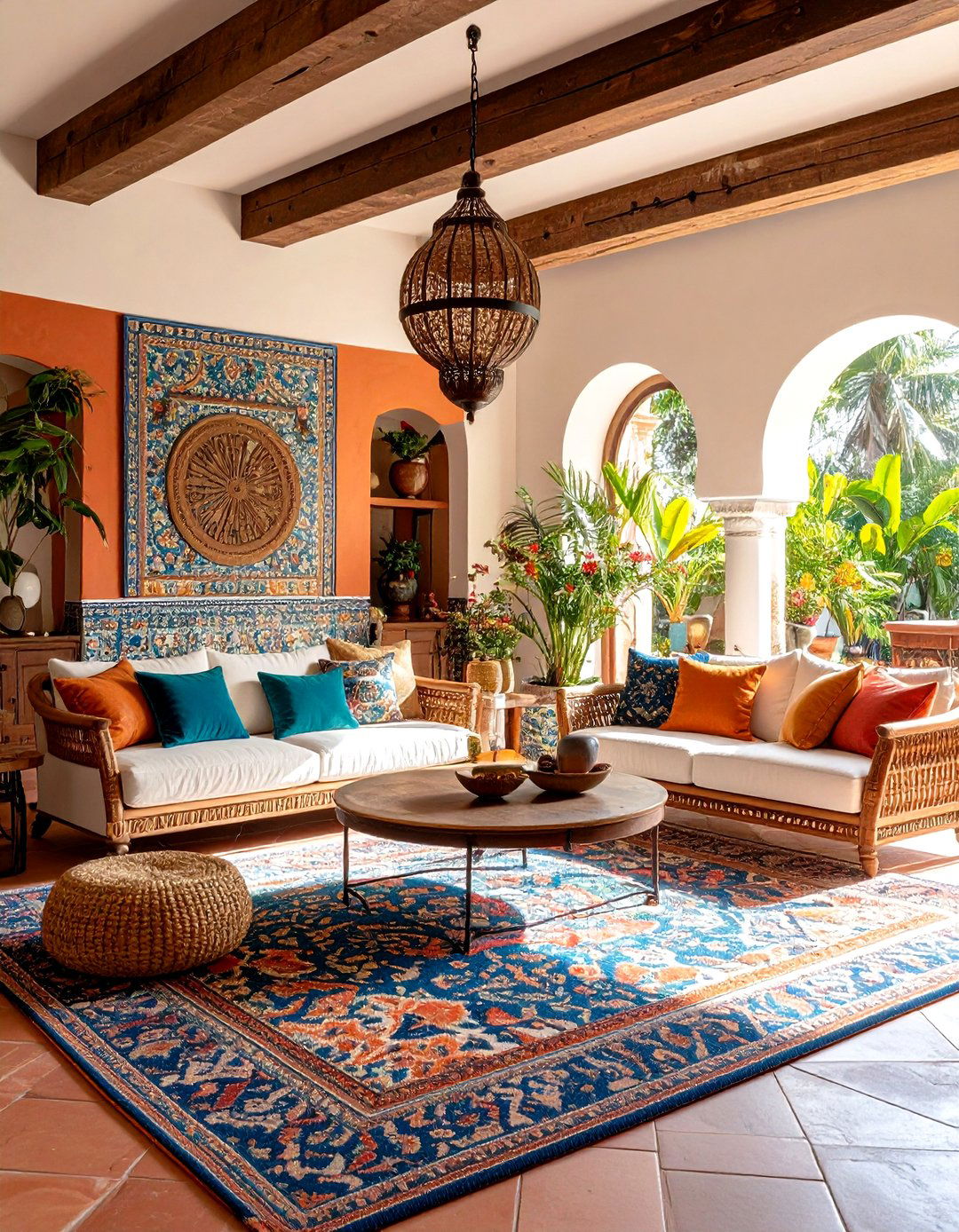
Spanish Colonial Revival interiors create warm, inviting atmospheres through careful attention to materials, colors, and decorative elements that support the architecture's romantic character. Key features include exposed wooden ceiling beams, hand-painted tiles, wrought iron light fixtures, and textured wall finishes that provide visual interest and cultural authenticity. How do these interior elements create such distinctive and appealing spaces? They emphasize handcrafted materials and natural textures that age beautifully while providing rich sensory experiences through varied surfaces, patterns, and forms. Furniture selections typically include heavy wooden pieces with carved details, leather upholstery, and wrought iron accents that complement the architecture's substantial character. Textile elements like colorful rugs, tapestries, and pottery collections add layers of pattern and color that reflect Spanish and Mexican craft traditions. Modern interpretations balance authentic historical elements with contemporary comfort and functionality, creating interiors that feel both timeless and livable for current lifestyle requirements while maintaining essential Spanish colonial character.
22. Furniture and Decorative Arts
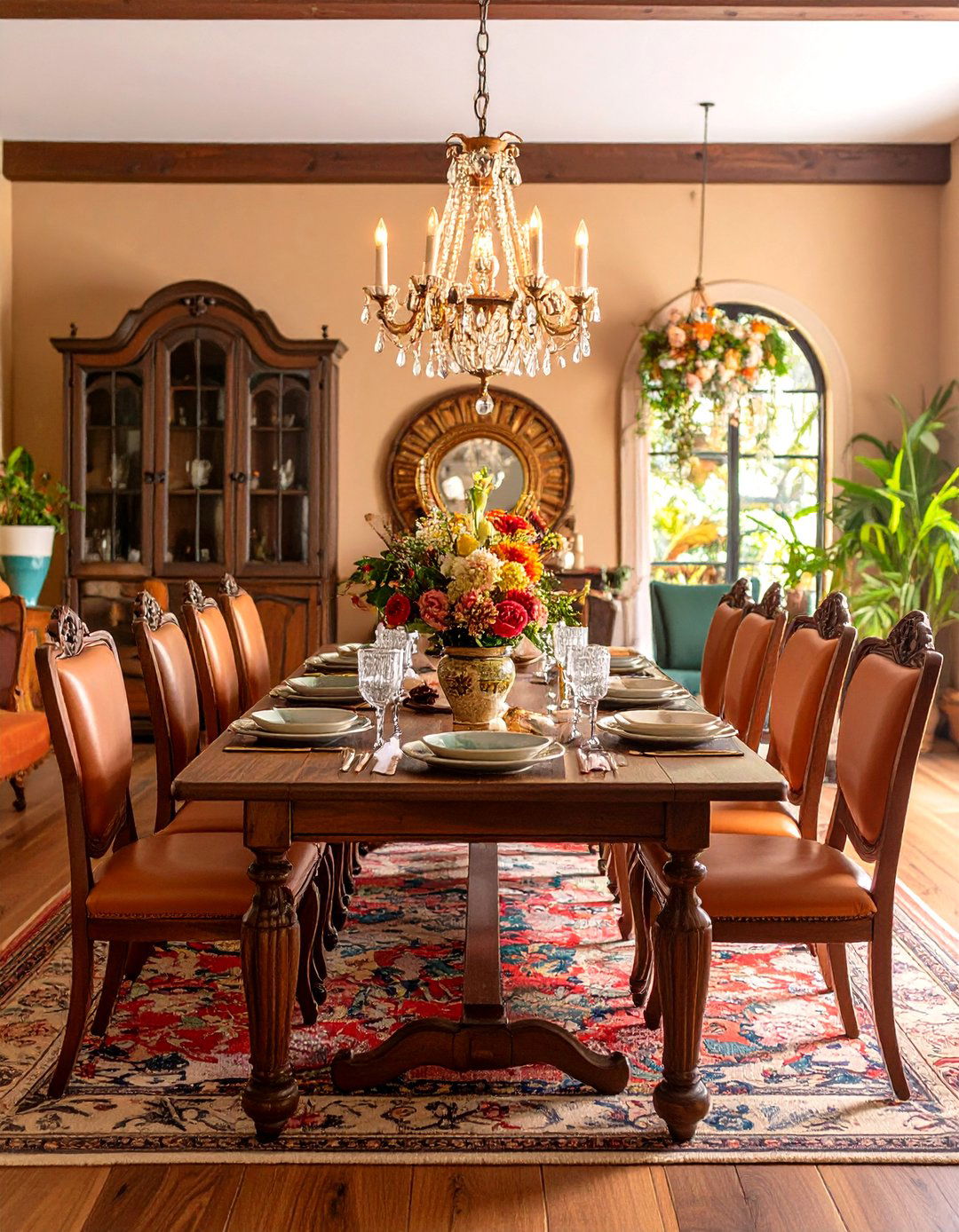
Spanish Colonial Revival furniture and decorative arts draw inspiration from centuries of Spanish, Mexican, and southwestern craft traditions, emphasizing handmade quality and natural materials that complement the architectural style. Traditional pieces include heavy wooden tables with carved details, leather-seated chairs with wrought iron frames, and painted cabinets that display ceramic collections and religious artifacts. Why do these furnishings feel so perfectly suited to Spanish Colonial Revival interiors? Their substantial scale and rich materials match the architecture's emphasis on permanence and cultural authenticity while providing practical functionality for modern living. Decorative elements include hand-painted ceramics, wrought iron candlesticks, colorful textiles, and religious artwork that reflect the spiritual and cultural traditions underlying the architectural style. Modern reproductions make authentic designs accessible while contemporary artisans continue traditional craft techniques, creating new pieces that honor historical precedents. Careful curation of these decorative elements creates interiors that feel collected over time rather than purchased all at once, supporting the style's emphasis on heritage and cultural continuity.
23. Preservation and Restoration
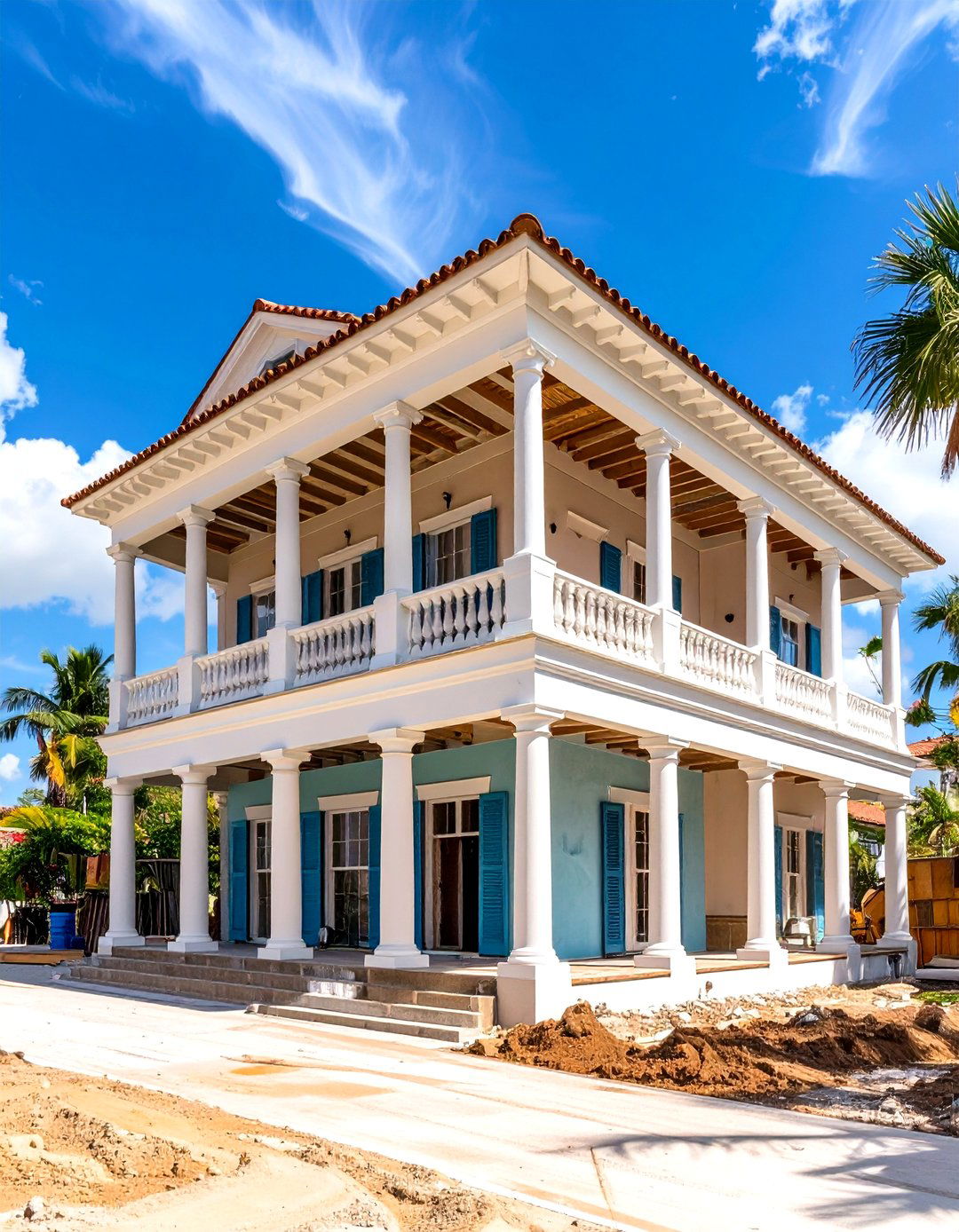
Preserving and restoring Spanish Colonial Revival buildings requires specialized knowledge of traditional materials, construction techniques, and decorative arts that may no longer be in common use. Successful projects balance historical authenticity with modern building codes, accessibility requirements, and updated mechanical systems while maintaining the architecture's essential character. What challenges do preservationists face with these buildings? Original materials like lime-based stucco, hand-made tiles, and wrought iron details may require specialized craftsmen and historically appropriate replacement materials that can be difficult to source and expensive to install. Structural issues often involve updating foundations, seismic strengthening, and improving insulation while preserving character-defining features like exposed beams and decorative elements. Modern preservation projects increasingly emphasize sustainable practices that extend building life while reducing environmental impact. Professional preservation architects and craftsmen work together to maintain these architectural treasures for future generations, ensuring that Spanish Colonial Revival buildings continue to serve their communities while preserving important cultural and architectural heritage.
24. Global Influence and Legacy
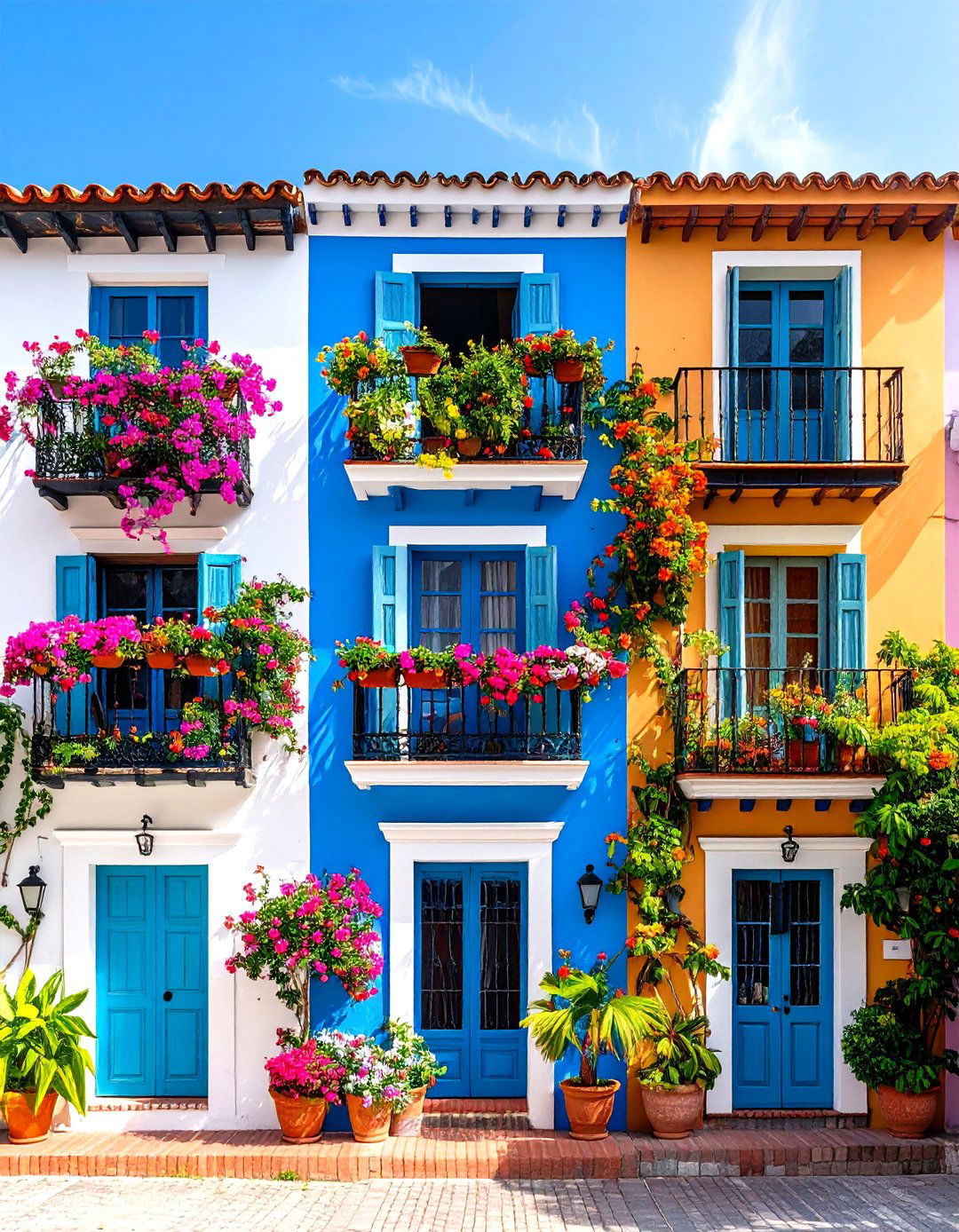
Spanish Colonial Revival architecture's influence extends far beyond its American origins, inspiring buildings throughout the former Spanish empire and influencing contemporary design worldwide. From Australia to Argentina, architects have adapted Spanish colonial elements to local climates, materials, and cultural preferences while maintaining the style's essential romantic character. How has this architectural movement achieved such widespread and enduring influence? Its emphasis on climate-responsive design, indoor-outdoor living, and cultural continuity addresses universal human needs while providing flexible frameworks for regional adaptation and personal expression. The style's integration of European sophistication with indigenous building traditions offers models for contemporary architects seeking to create culturally rooted, environmentally appropriate designs. Modern global interpretations incorporate contemporary technologies and sustainable practices while maintaining traditional proportions, materials, and decorative elements. This architectural legacy demonstrates how historical styles can evolve and adapt to changing conditions while preserving their essential cultural meaning and aesthetic appeal for new generations of users and admirers.
Conclusion:
Spanish Colonial Revival architecture continues to captivate architects, homeowners, and communities worldwide through its timeless blend of romance, functionality, and cultural authenticity. This remarkable architectural movement successfully bridges past and present, demonstrating how historical traditions can adapt to contemporary needs while preserving essential character and meaning. From its dramatic introduction at the 1915 Panama-California Exposition to its current status as a beloved design choice for luxury resorts, residential communities, and public buildings, Spanish Colonial Revival has proven its enduring relevance and appeal. The style's emphasis on indoor-outdoor living, climate-responsive design, and handcrafted details offers valuable lessons for contemporary sustainable architecture, while its celebration of cultural heritage provides models for creating meaningful, place-based design. As we face challenges of climate change, cultural globalization, and urban development, Spanish Colonial Revival architecture reminds us that beautiful, functional buildings can honor the past while serving the future.



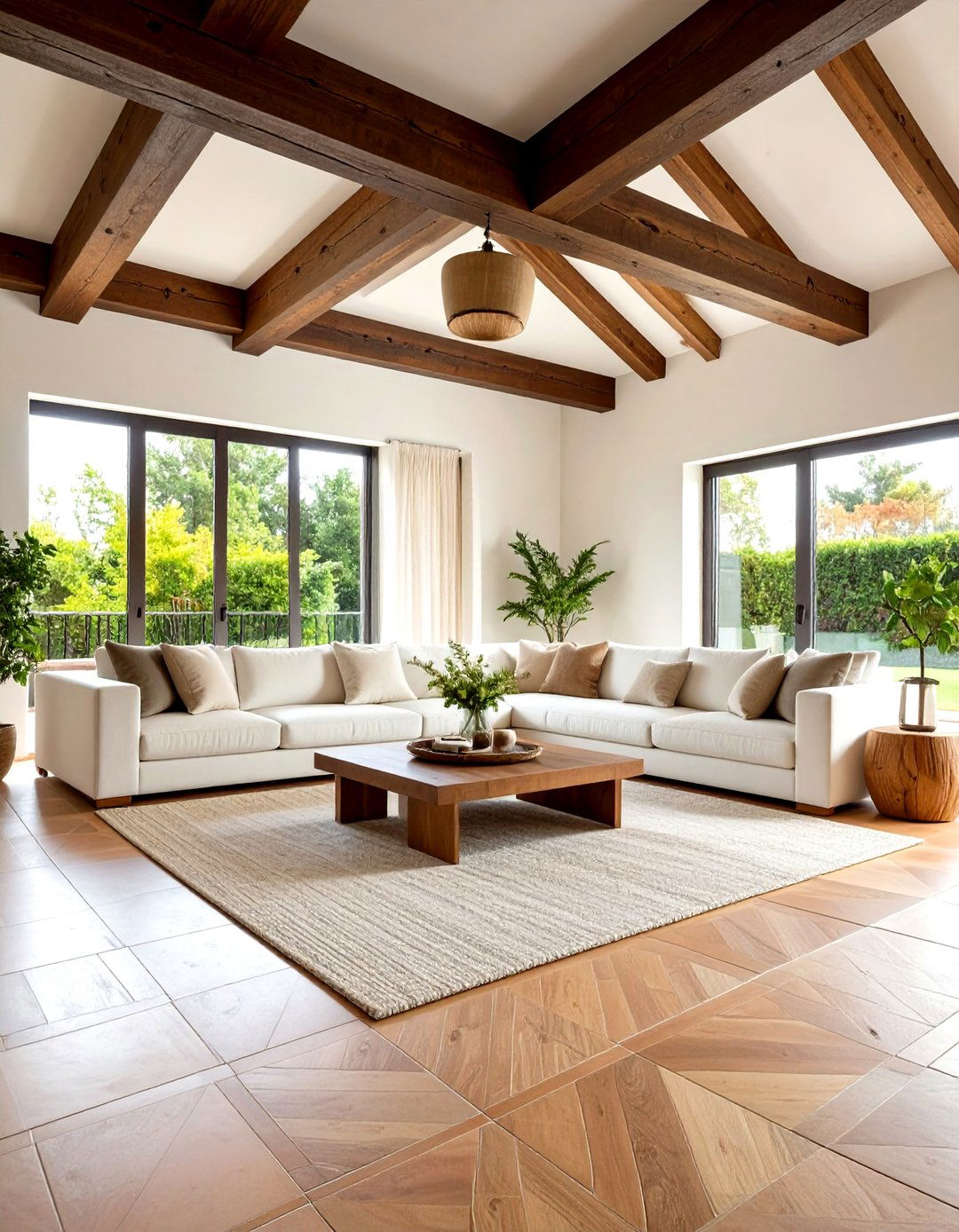
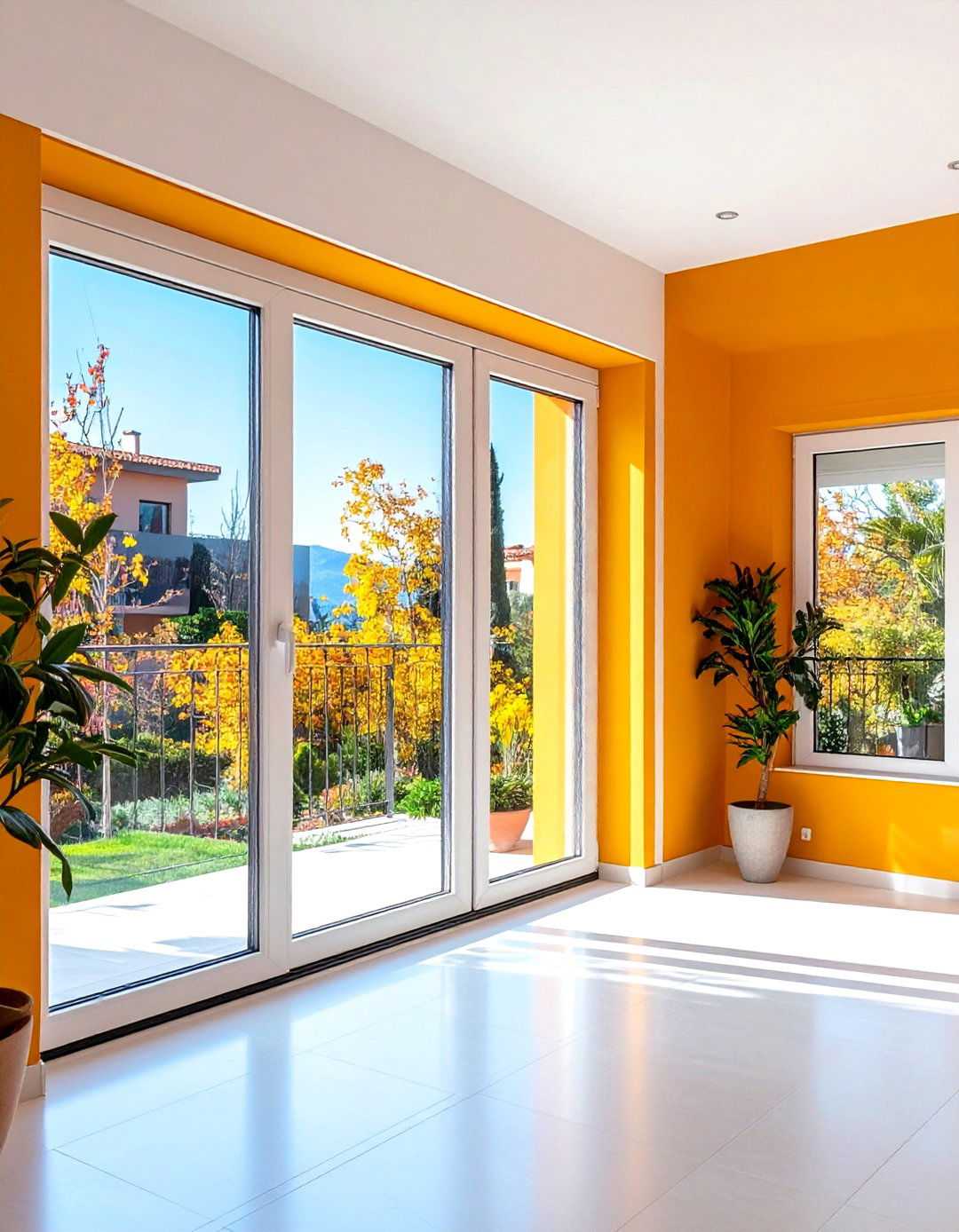
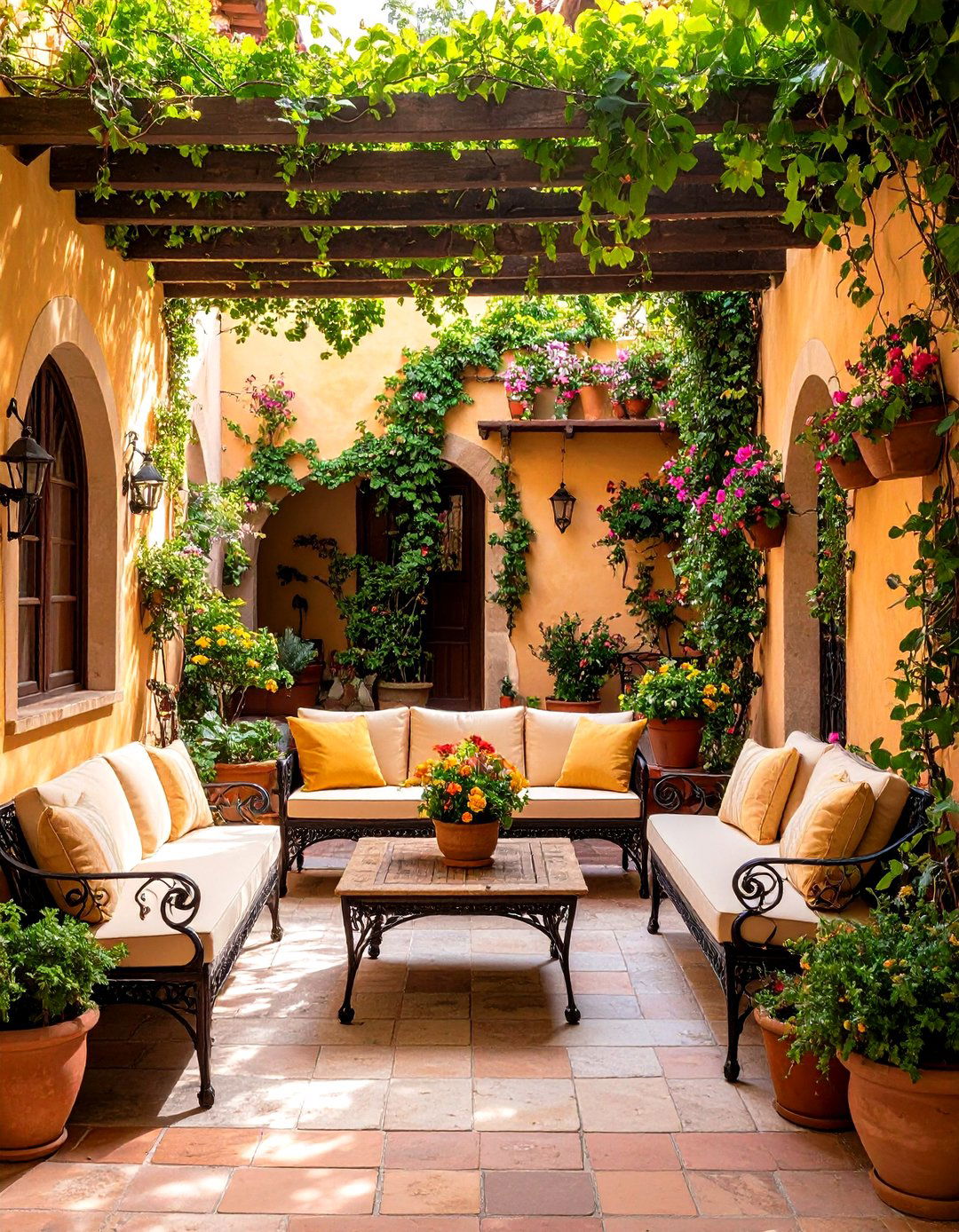
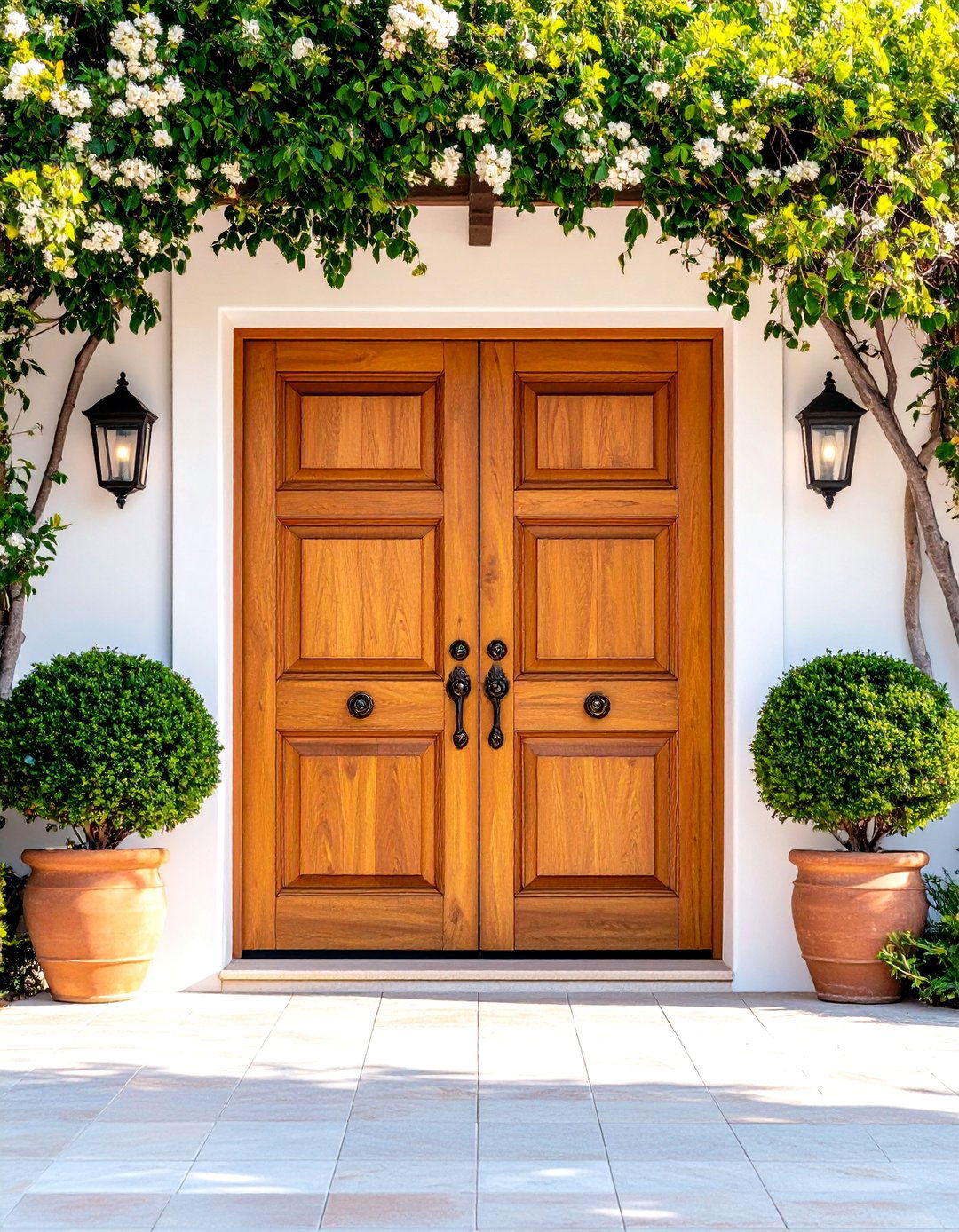
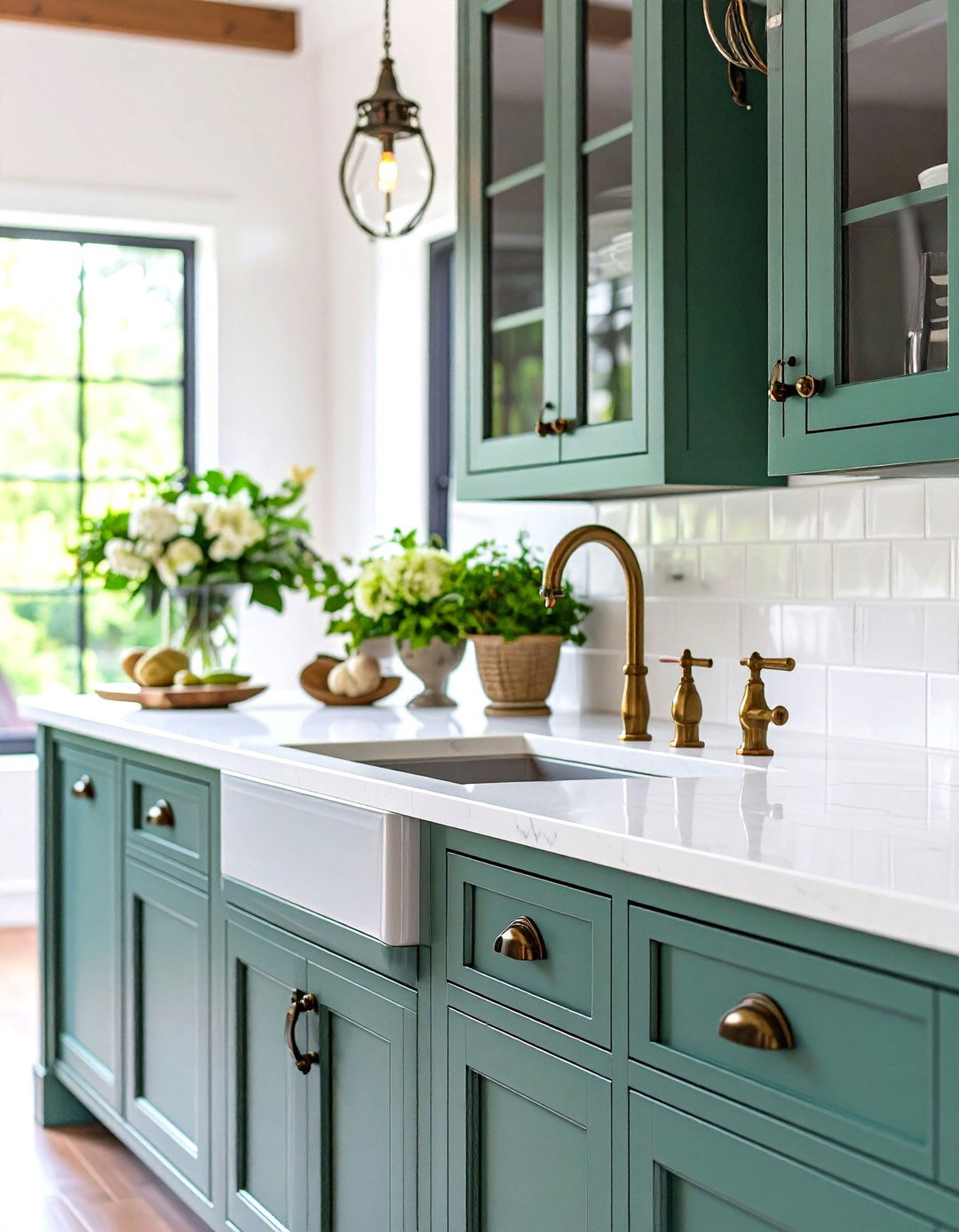
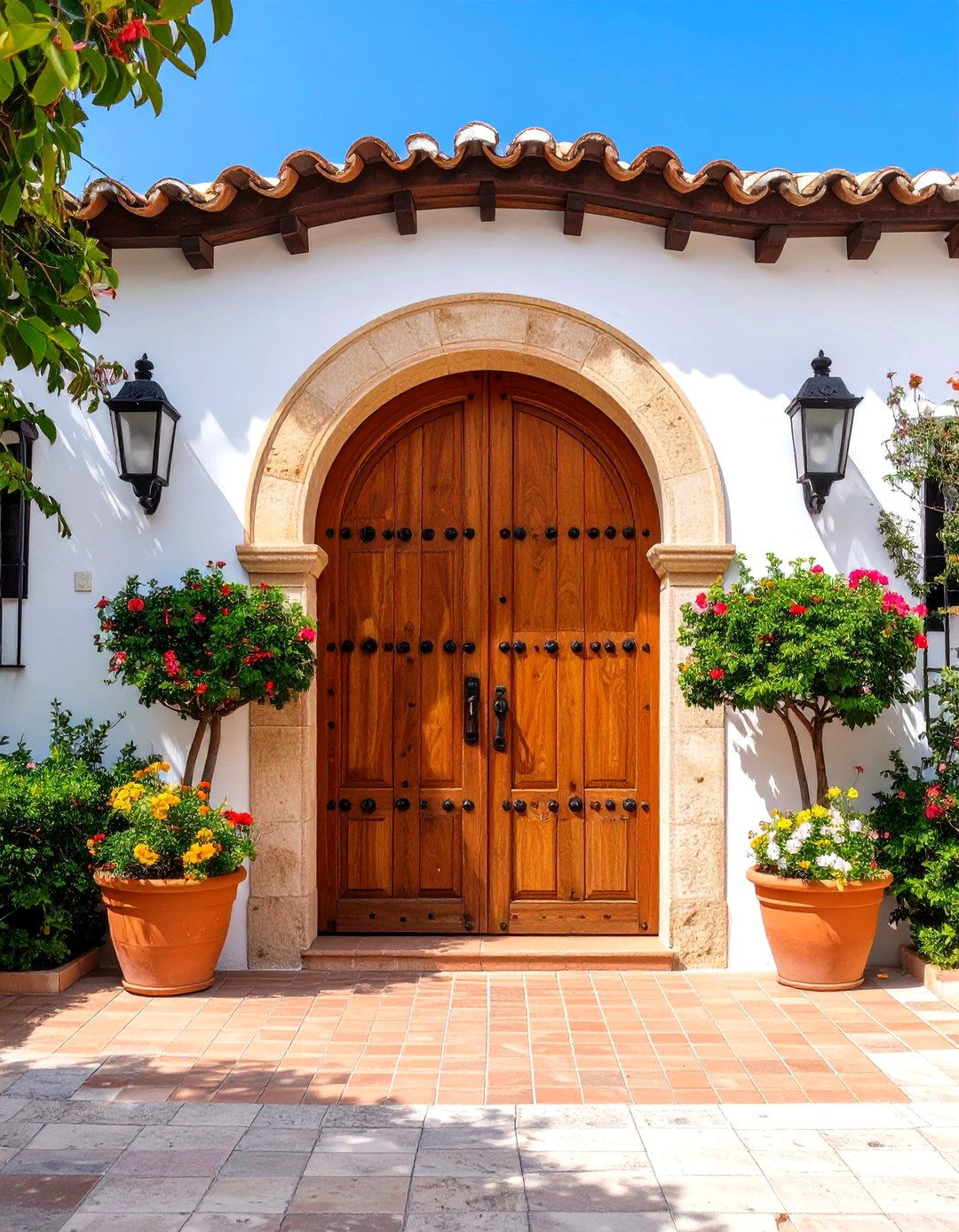
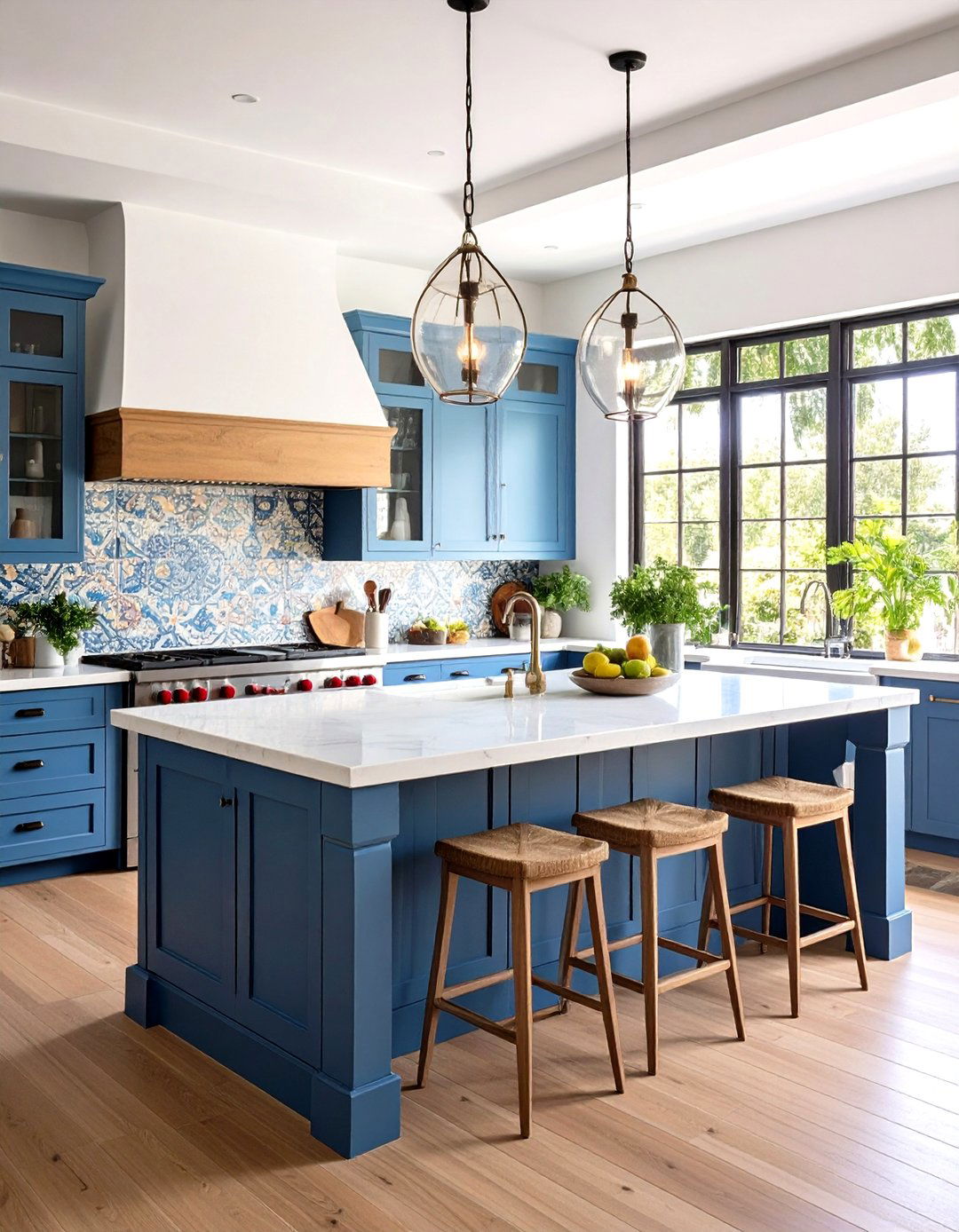
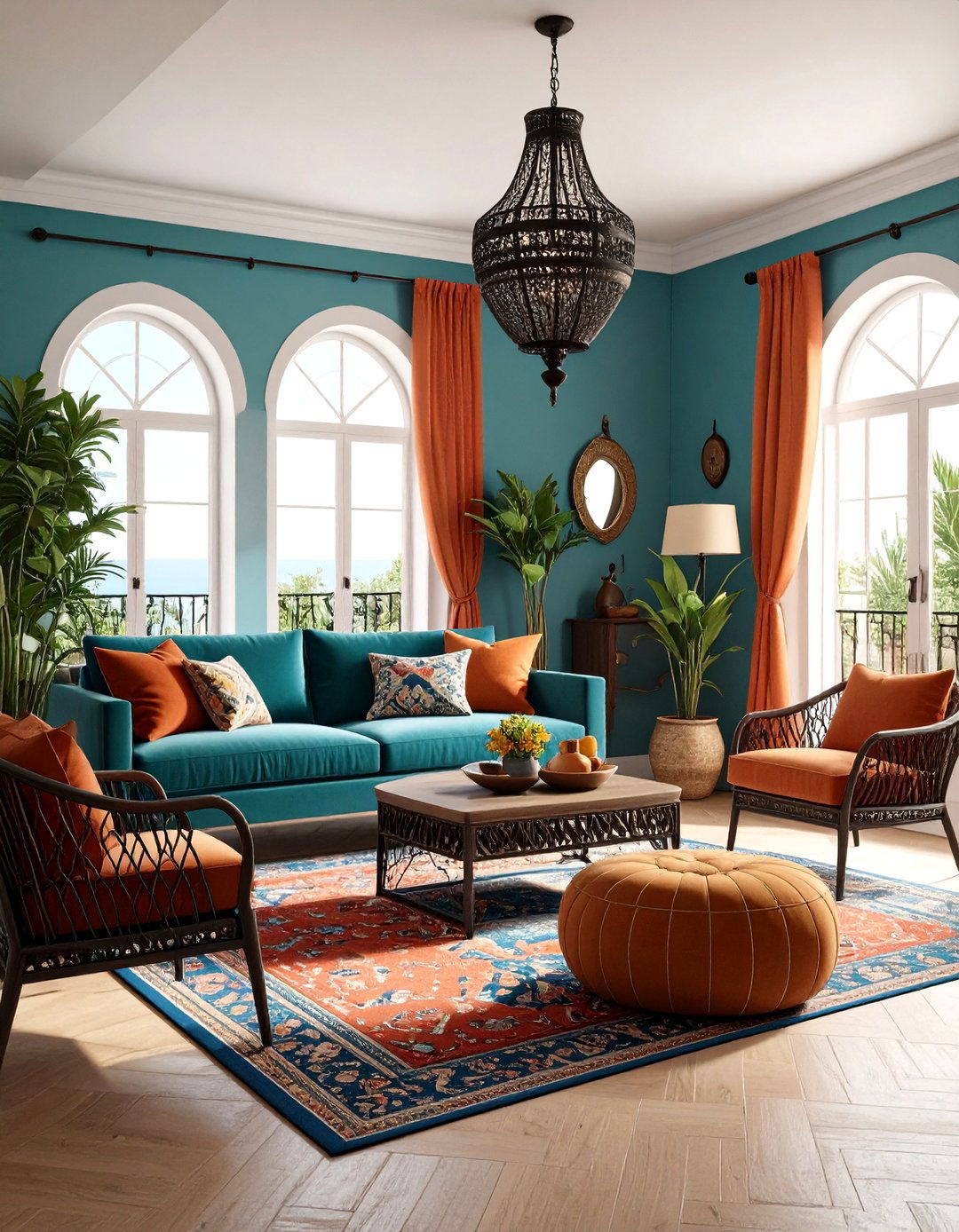


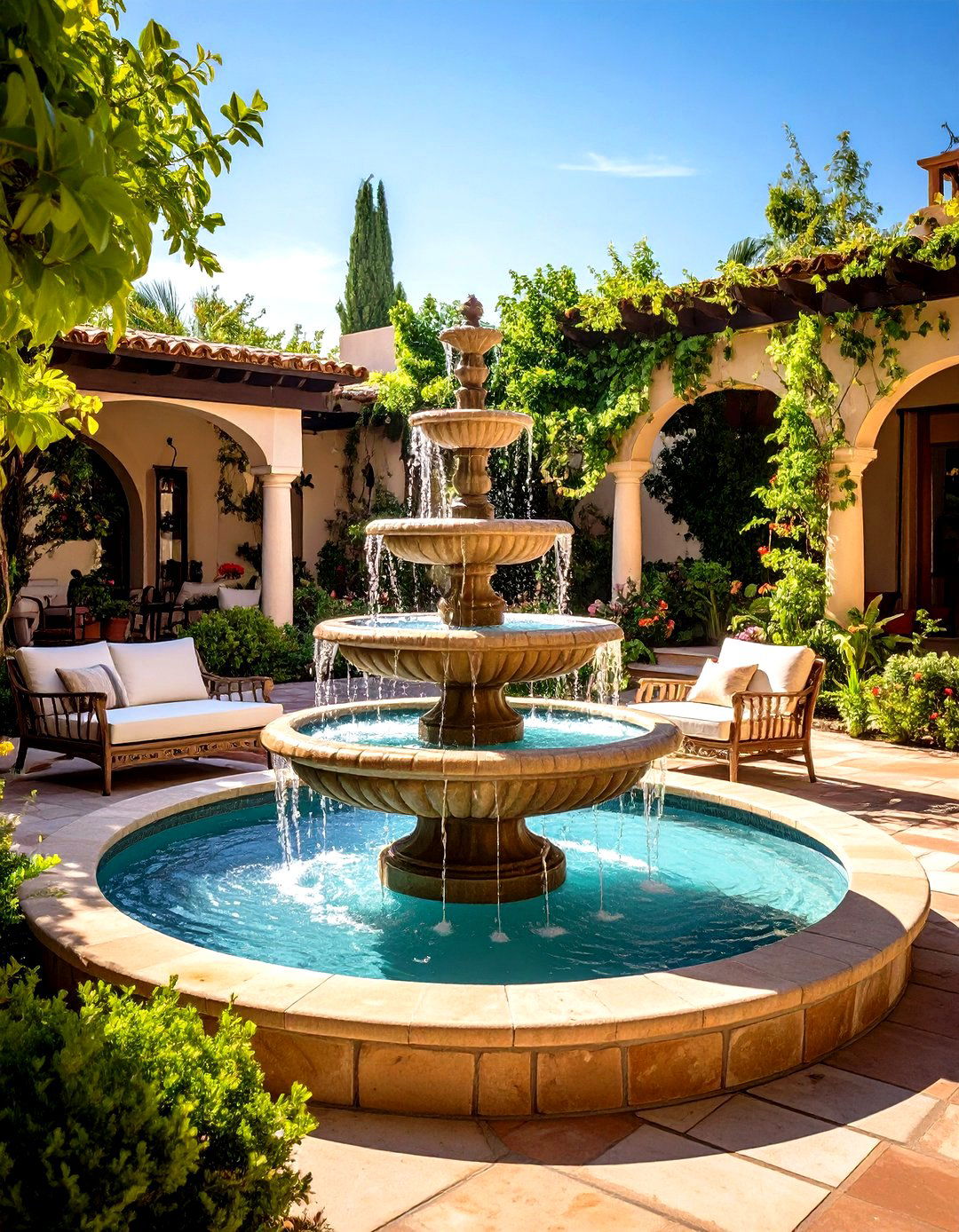
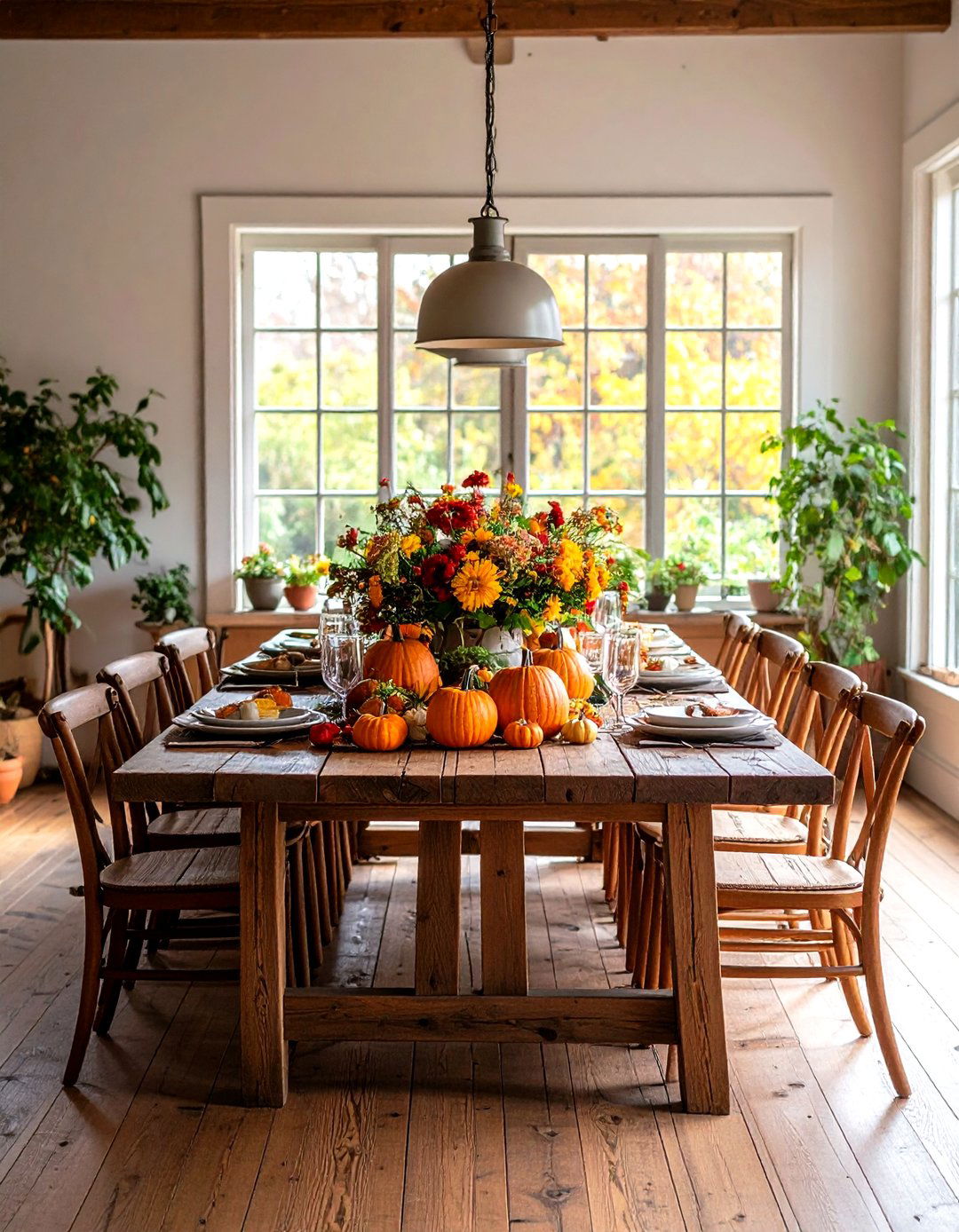


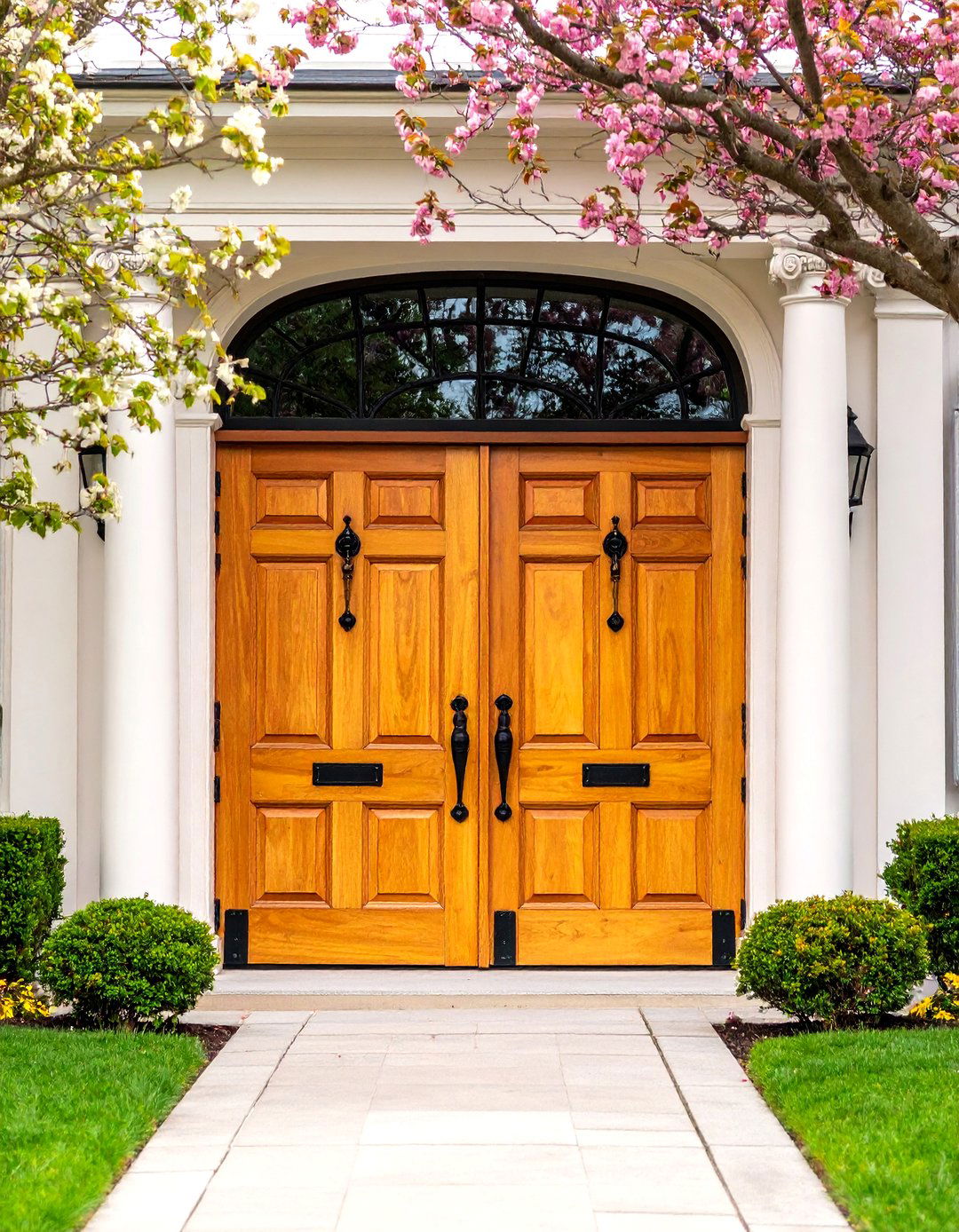
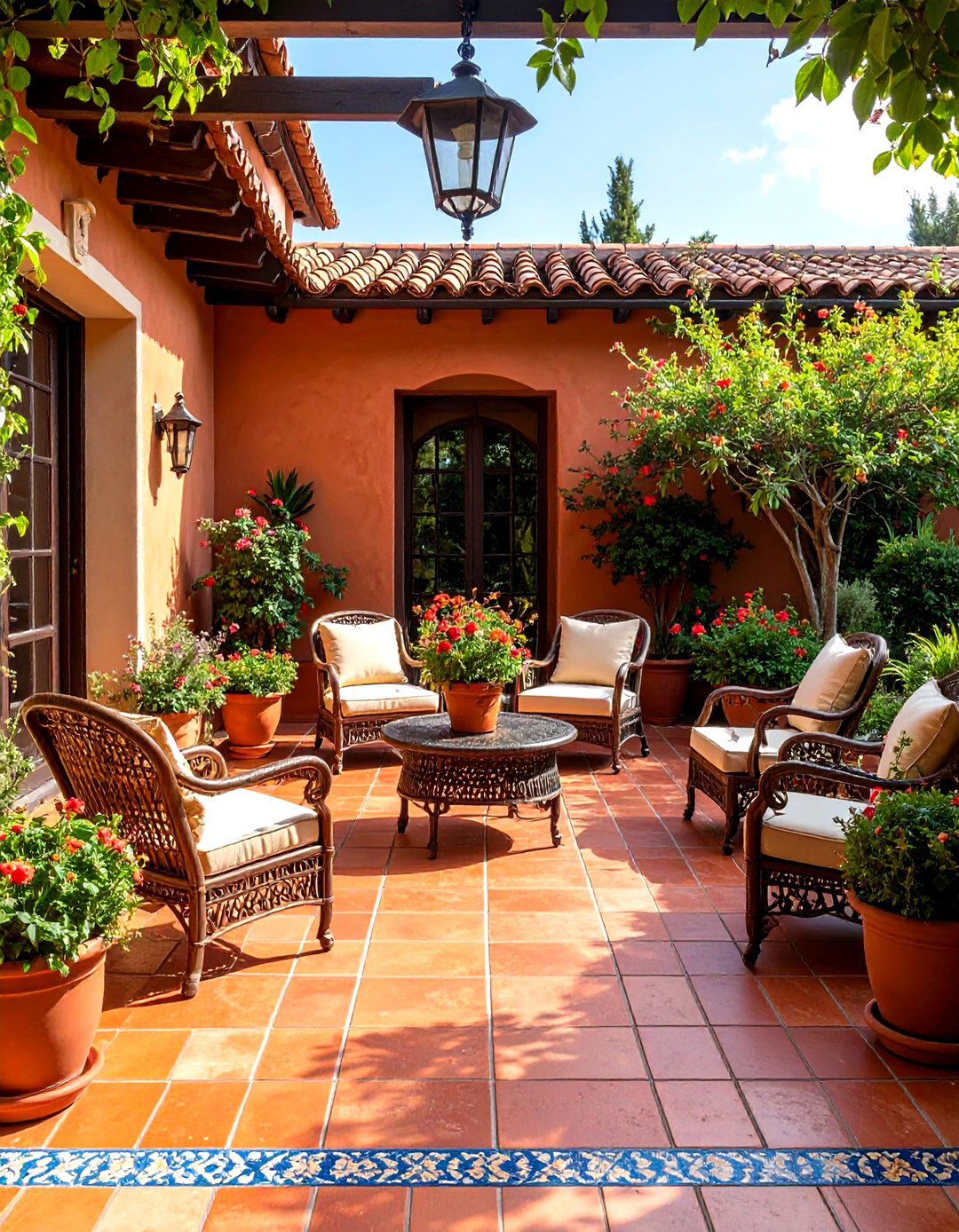
Leave a Reply